

Upcoming Events
- Jepson Center & Telfair Children's Art Museum
- Telfair Academy
Owens-Thomas House & Slave Quarters
Built in 1819, this mansion exemplifies the neoclassical styles popular in England during the Regency period. The Owens-Thomas House & Slave Quarters allows visitors to explore the complicated relationships between the most and least powerful people in the city of Savannah in the early 19th century.
Our tours focus on the art, architecture, and history of the home through the lens of slavery. Visitors will experience an inclusive interpretation of not only the wealthy families that inhabited this home for a span of over 100 years, but of also the enslaved people who lived and labored here.
Owens-Thomas House & Slave Quarters Tours
- Guided tours are given at 15-minute intervals. The last tour begins at 4:00pm.
- Tours typically last around 45 minutes to an hour.
- Tour groups consist of up to 12 people.
- Please check in onsite to get a tour time, even if you’ve purchased tickets at our other two sites.
- Daily tours at the Owens-Thomas House & Slave Quarters fill up fast on a first-come, first-served basis.
*Due to the historic nature of the site, the Owens-Thomas House & Slave Quarters contain the original staircases of the site with no elevator access.
- Jepson Center : 7 mins
- Telfair Academy : 7 mins
History of the Richardson-Owens-Thomas House
Shipping merchant and enslaver Richard Richardson commissioned this house around 1816, and his family moved in upon its completion in 1819. The home was designed by English architect (and relative to Richardson by marriage) William Jay but was constructed by builder John Retan and likely a team of free and enslaved men in his charge. The property also included a two-sided privy and a building located on the east end of the lot, which was divided into a carriage house and slave quarters.
The Richardsons only lived in the home for a few years before they saw a steady decrease in their prosperity. After the combination of the financial Panic of 1819, a yellow fever epidemic, a fire that destroyed half the city, and the death of Frances and two of the children, Richardson decided to sell the house and move to Louisiana, where he had family and business interests.
By 1824, the Bank of the United States owned the home, which they leased to Mary Maxwell as a boarding house. The Marquis de Lafayette was a guest of Mrs. Maxwell when he visited Savannah in March 1825 as part of his whirlwind tour of the United States for the 50th anniversary of the American Revolution.
In 1830, lawyer, landholder, and enslaver George Welshman Owens purchased the property at auction for $10,000. He lived here with his wife, Sarah, their six children, and up to fourteen enslaved laborers. Over the next 121 years, the home would continue to be owned by the Owens family until the last descendent, Margaret Gray Thomas, George Owens’s granddaughter, bequeathed the property upon her death in 1951 to the Telfair Academy of Arts and Sciences to be run as a house museum in honor of her grandfather, George Owens, and her father, Dr. James Gray Thomas. The site opened to the public in 1954.
Carriage House
Orientation gallery.
The south half of this building originally housed horses and carriages on the first floor with a hay loft on the floor above.
Slave Quarters
The north half of the building contains the original slave quarters for the site. This two-story structure was composed of three rooms on each level. About five to fourteen enslaved people, most of which were female and children or teenagers, lived and worked on the site at any given time. These individuals worked in domestic labor duties like cooking, cleaning, washing laundry, and raising children.
- View image 1 in lightbox:
- View image 2 in lightbox:
- View image 3 in lightbox:
- View image 4 in lightbox:
Parterre Garden
The parterre style garden occupies the space between the main house and the carriage house. This area originally functioned as a work yard, which likely included a small kitchen garden, areas to dry laundry and clean rugs, and perhaps pens and coops for small livestock and chickens. It even contained a two-sided privy, or outhouse, in the northeast corner.
Originally, this space was a work yard. In 1956 it was transformed into an English parterre garden.
The Mansion
Public spaces.
When the Richardson or Owens families entertained, they did so in the public spaces of their home: the drawing room, front hall, and dining room. These spaces, designed in the finest Regency style and filled with American and English furniture and decorative arts, were intended to impress. They feature elaborate molding, faux finishes, curved walls, and decorative sidelights.
Entertaining spaces also allowed for transfers of information, both intentionally and circumstantially. Peter, the Owens family’s enslaved butler, doubtlessly listened closely as George Owens debated politics and policies that would affect the lives of himself and his family and friends.
Private Spaces
The bedrooms, library, and family dining room of the home were considered more private spaces utilized by the family and close friends, rather than entertaining spaces for formal events. These rooms allow for an in-depth exploration of how the economic elite and their enslaved servants interacted on a daily basis.
Second-floor bridge inside the house
The formal dining room
- View image 6 in lightbox:
- View image 7 in lightbox:
- View image 8 in lightbox:
Butler’s Pantry
Enslaved butlers managed not just the daily operations of upper-class homes, but also the enslaved staff that serviced them. In addition, enslaved butlers maintained the fine silver, china, and glassware used in entertaining. They would have stored valuable items in this space, which is complete with original cabinetry’s faux finishes, reproduced according to the results of paint analysis.
The basement, which retains many original components, contains the kitchen, scullery, a large cistern, and other workspaces. These wonderfully preserved spaces offer more interpretive text and material to help visitors understand the day-to-day lives of the enslaved people who lived and worked here.
Bathing Chamber at the Owens-Thomas House & Slave Quarters
Name Wall at the Owens-Thomas House & Slave Quarters
- Decorative Arts
The furniture and decorative objects from Telfair’s collection that are displayed at the Owens-Thomas House date largely from the early to mid-19th century. Most were produced in England or America. About one third of the objects descended in the Owens family, and many others were owned by wealthy Savannahians of the same period.
Frequently Asked Questions (FAQ)
When we open the site each day, tour slots are available for visitors on a first-come, first-serve basis. You must book a tour in-person at the ticket booth. If you would like to book a tour for later in the day, you are more than welcome to choose a later timeslot as long as we have enough available capacity for your group! We recommend showing up as early as possible if you have a large party or would like to reserve a particular tour time that day.
Unfortunately, we only reserve tour slots for the current day. However, if you have a large group consisting of 12 people or more (i.e., a Girl Scout Troop, school groups, a large family/travelling tour group, etc.), visit telfair.org/group-tours/ for more information and advanced booking options. Keeping in mind our limited capacity and staffing requirements, we request you make your reservation at least four weeks in advance.
We currently do not have an online booking system, and tours may only be booked in-person at the ticket booth. We apologize for any inconvenience!
Yes, all visitors must reserve their tour times in-person at the ticket booth. The line ensures that tour times are made available to all our visitors on a first-come, first-serve basis.
Telfair Museums only offers a three-site pass to ensure that our visitors have the opportunity to experience all the museum has to offer at one combined price.
Our interior waiting area has limited capacity, so keep in mind that we are only able to allow one group in at a time. Approximately 5-10 minutes before your tour begins, a Historical Interpreter will welcome all visitors in the tour group to spend the remainder of their waiting time in the Orientation Gallery. This space houses displays of introductory information available to read while you wait, as well as benches that visitors may rest on indoors before their tour starts.
If your waiting time is 20 minutes or more, we have additional benches in the Courtyard and Garden on the property. You are more than welcome to visit another location during your waiting time, just be sure to return 5-10 minutes prior to your tour start time
We put out the sold-out notices as soon as we reach our capacity for the day, so if you haven’t already checked in at the ticket booth to receive your tour time, we unfortunately don’t have the capacity to accommodate you today. While we’d love to allow as many visitors as possible to experience this site, we have limited visitor entries each day to help preserve the historic integrity of the buildings themselves.
Guided tours typically last somewhere between 45-60 minutes.
Due to our buildings’ capacity limits and other logistical challenges, we currently only offer guided tours through the property which begin every 15 minutes. However, the other two Telfair Museum sites do not require a tour, so if you prefer a self-paced experience, we recommend visiting the Telfair Academy and Jepson Center!
While some of us would love to accommodate all kinds of furry friends, our sites only allow service dogs required for a disability.
We have paper transcripts of the audio tour available in Spanish, so just ask a Historical Interpreter and we’ll be happy to assist you! We are currently working on developing translations in additional languages, and we appreciate your patience while we expand our language accessibility.
The Orientation Gallery and Slave Quarters have ramped entrances, but the main building is unfortunately not ADA accessible. There are several flights of stairs within the house itself, but there are benches and chairs throughout where visitors who would like to opt out may sit and wait for their group. We apologize for the inconvenience!
- Our Three Museums
- Hours & Admission
- Telfair Children’s Art Museum
- Group Tours
- School Tours
- Girl Scout Tours
- Directions & Parking
- Free Family Days
- Accessibility & Policies
- Exhibitions
- Explore All Blog Topics
- Arts in Savannah
- Art and Technology
- Contemporary Artists
- Collecting for the Museum
- Owens-Thomas House Ownership and Architecture
- Slavery in Savannah
- Mary Telfair
- Growth of Savannah
- Architecture
- Early Innovations
- The Regency Style
- Building for the City
- Youth Classes
- Adult Classes
- Summer Camp
- Adult Programs
- Family Programs
- Teen Council
- Become a Member
- Donate & Sponsor
- Director’s Circle
- Corporate Partners
- Docent Program
- Member Affinity Groups
- Member Portal
- About the Collection
- Search the Collection
- Rights & Reproductions
- Our Mission
- Outreach & Community Impact
- Board of Trustees
- Annual Report
- Event Rentals
- Job Opportunities
- Get Directions
- View Upcoming Events

Savannah First-Timer's Guide
Plan the Perfect Trip to Savannah
Black History Tours Savannah: Which Ones Are Best?
- THINGS TO DO
- 16 Comments
- by Erin Clarkson
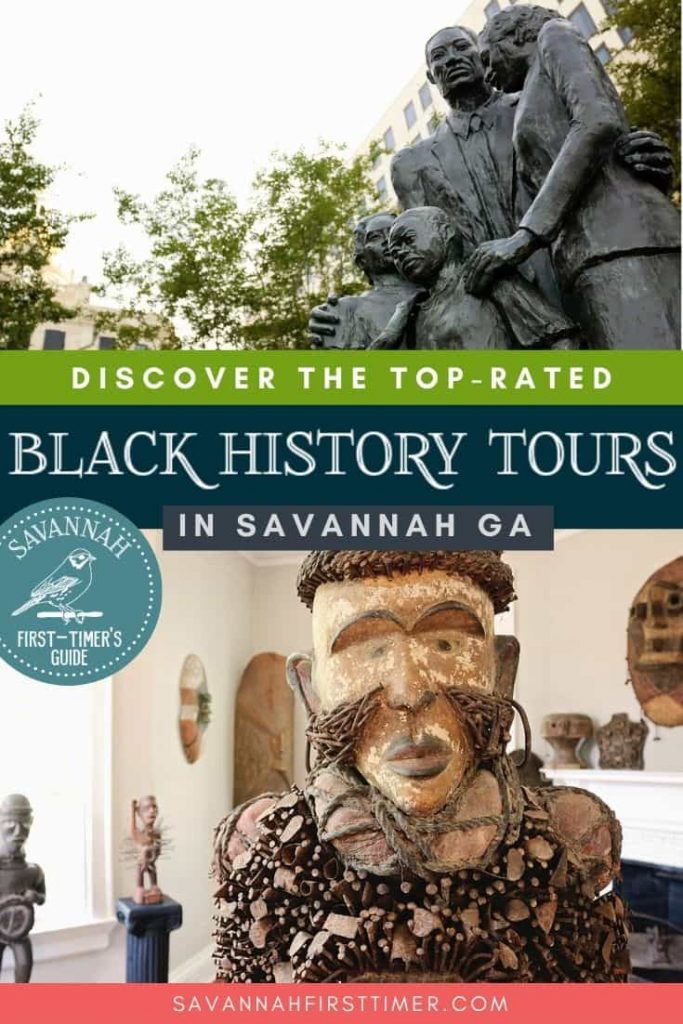
Savannah is a beautiful city with such a complicated history. A good portion of the Historic District was built by enslaved men and women, and — to truly appreciate its beauty — it’s important to acknowledge how the city came to be.
With that in mind, here are some of the best Black history tours in Savannah , with a focus on the ones that make every attempt to get the details right.
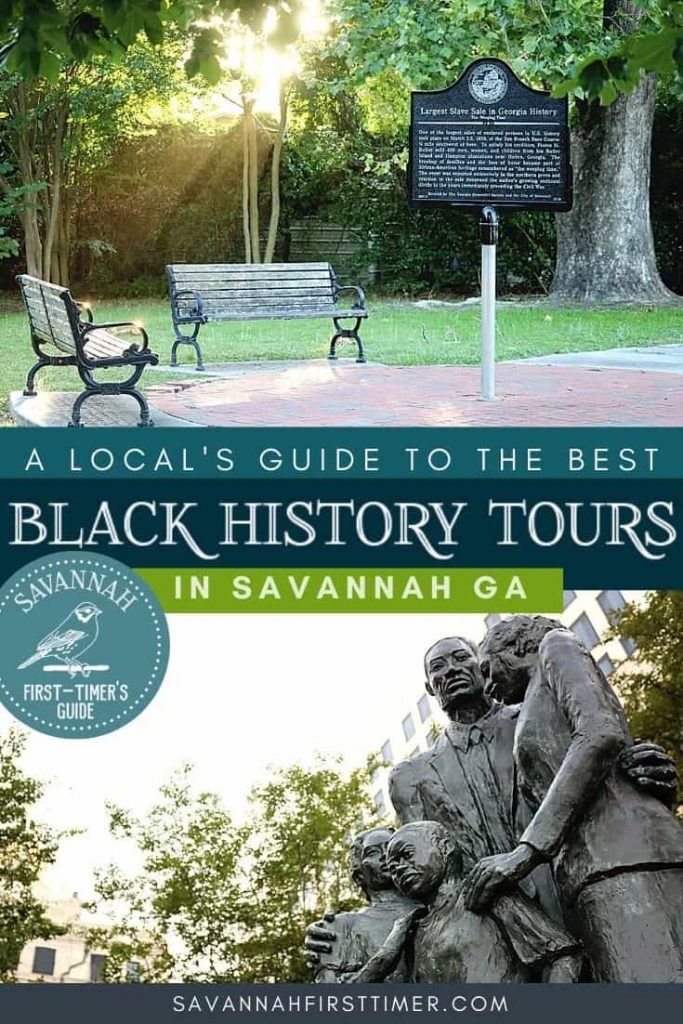
Note: This guide contains affiliate links to my trusted travel partners.
If you’re new around here, first of all… allow me to extend a warm welcome!
My name is Erin, and I authored the Savannah First-Timer’s Guide . It combines my top Savannah travel tips from this website into one handy downloadable guide.
Table of Contents
Black History Tours in Savannah GA
If you’re wondering why you should schedule a Black history tour when you visit Savannah, it’s because it will help you to better understand the complex dynamics of the city.
The tours I’m recommending below are informative ones that will help you learn more about the collective contributions from the Black community — both enslaved and freed.
In a hurry? Here is my top recommendation: ➡️ From Slavery to Freedom Tour You might also be interested in reading: ➡️ A Local’s Guide to the Best Things To Do in Savannah, Georgia ➡️ Savannah Must-See Spots for First-Time Visitors
Pin Point Heritage Museum
Pin Point has long been one of my favorite tours in Savannah! It’s one of the “must see” spots I recommend anytime I have friends or family in town for a visit, and it’s one of the Top 10 attractions listed in my Savannah travel guide .
Y’all, this tour is SO GOOD, so informative, and 100% worth a visit!
The community of Pin Point was established back in 1896. It was founded by descendants of the enslaved men and women who arrived in Savannah from Central and West Africa via the Transatlantic Trade Route.
Those original founders purchased slivers of land along the marsh just south of Savannah and formed the small, self-sustaining community known as Pin Point.
Their main source of income was the A.S. Varn and Sons Oyster Factory, which currently operates as Pin Point Museum.
The tight-knit community was known for their crabbing, shrimping, and oyster harvesting operations. Some of their oyster products were even served at the White House!
Descendants of the original landowners will show you around the former oyster factory while teaching about the beautiful philosophy of the Gullah Geechee people — which is essentially to live off the land and seek only what you need, versus chasing after “wants”.
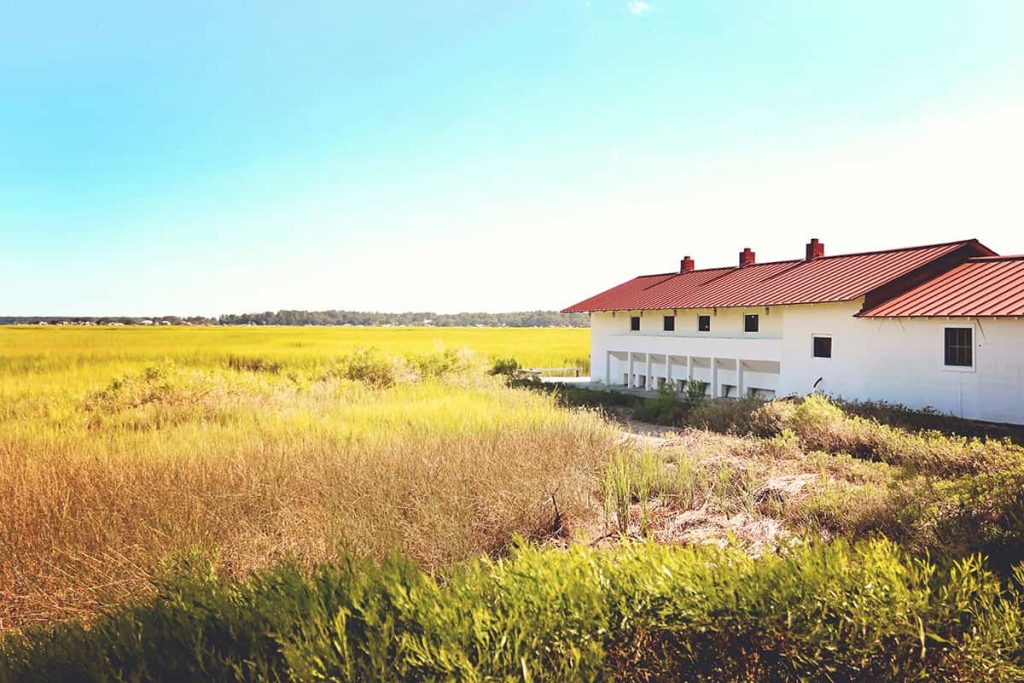
The site is run by the Coastal Heritage Society, and there are learning stations set up throughout the museum.
You can do a self-guided tour, but it’s much better to go on a guided one.
Why It’s Worth Visiting
In addition to being one of the best places in Savannah to learn about the Gullah Geechee culture, Pin Point is also a stunningly beautiful property.
The sunset views from there and nearby Butter Bean Beach are spectacular!
Depending on who you have as your guide, you might learn some of the Gullah language and even a few celebratory dance moves while you’re there.
If Gail Smith is available, I highly recommend requesting her to show you around!
Know Before You Go
- Website: Pin Point Heritage Museum
- Location: 9924 Pin Point Avenue, Savannah, GA 31401
- Tickets: From $5 – $9
- Parking: Their on-site parking lot fits approximately 15 to 20 vehicles
- Time to Allot: Plan on spending two hours at the site
- Note: You’ll need transportation to get to Pin Point from the Historic District
Local Insight: Pin Point is known for being the birthplace of U.S. Supreme Court Justice Clarence Thomas.
FAQ: What Does Gullah Geechee Mean?
Gullah Geechee is a term you’ll hear frequently in Savannah.
The Gullah Geechee people are descendants of West Africans who were enslaved, brought to the U.S., and forced to work on rice, cotton, and indigo plantations throughout the Coastal Empire and the Lowcountry — like the Sea Island cotton plantations on Cumberland Island , for example.
Islanders in the lower region of South Carolina are usually considered Gullah, while Georgians are referred to as Geechee.
“Gullah Geechee” is a sweeping term that encompasses the two. The local dialect is also sometimes referred to as Gullah.
The Gullah Geechee Historical Corridor was established by Congress in 2006 as a National Heritage Area and covers coastal regions in Florida, Georgia, South Carolina, and North Carolina.
Owens-Thomas House
The Owens-Thomas House and Slave Quarters is where you’ll best see the stark contrast between Savannah’s “haves” and “have nots”.
The main home, circa 1819, was designed by architect William Jay — the architect for many of Savannah’s notable buildings — and was built in the Regency style.
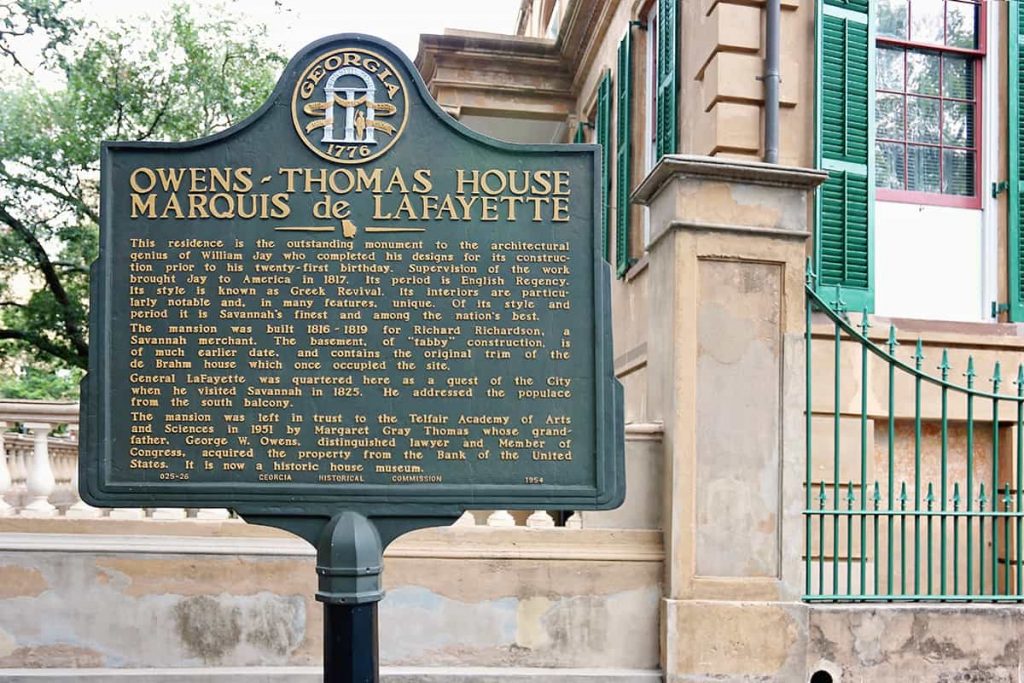
Before touring the mansion, you’ll walk through a small welcome center where you can watch educational videos pertinent to the time period.
The home is listed on the National Register of Historic Places.
The back wall of the welcome center honors enslaved individuals who worked in the home.
It’s a very simple wall covered in names and blank boards representing those whose names could not be retrieved, but it’s particularly memorable.
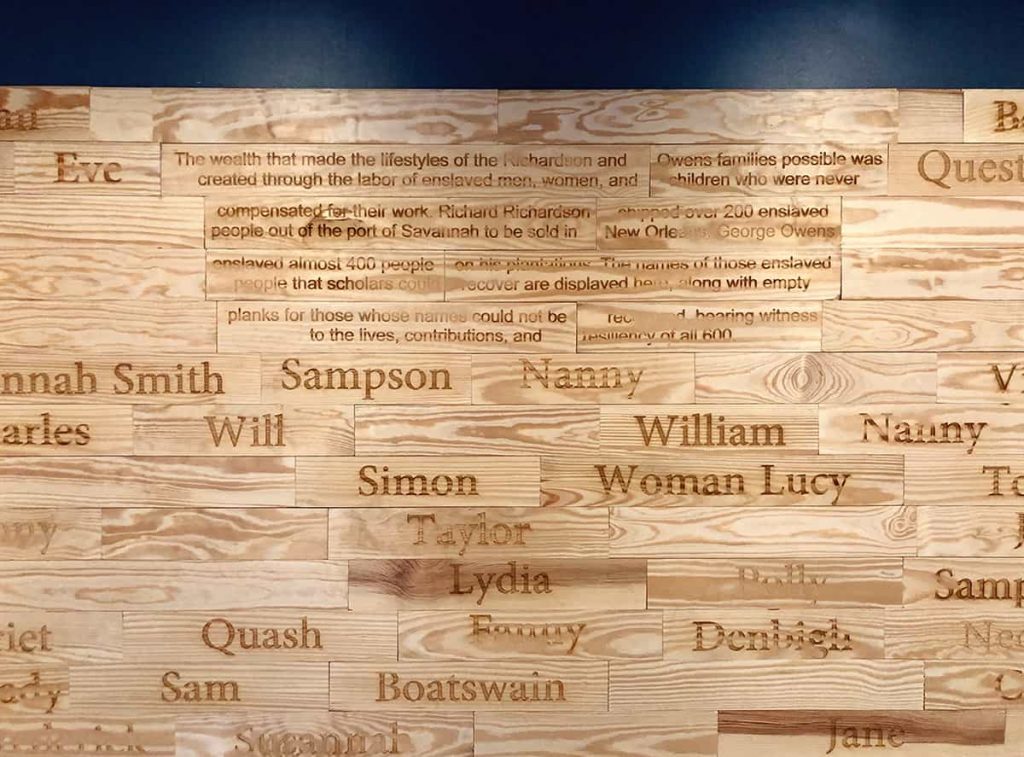
Next, you’ll enter the area where enslaved families resided and will learn what life was like for the men and women who worked inside the home.
Those families were essentially on call 24/7 and worked under the constant scrutiny of the homeowners. They tended to the every need of their enslavers.
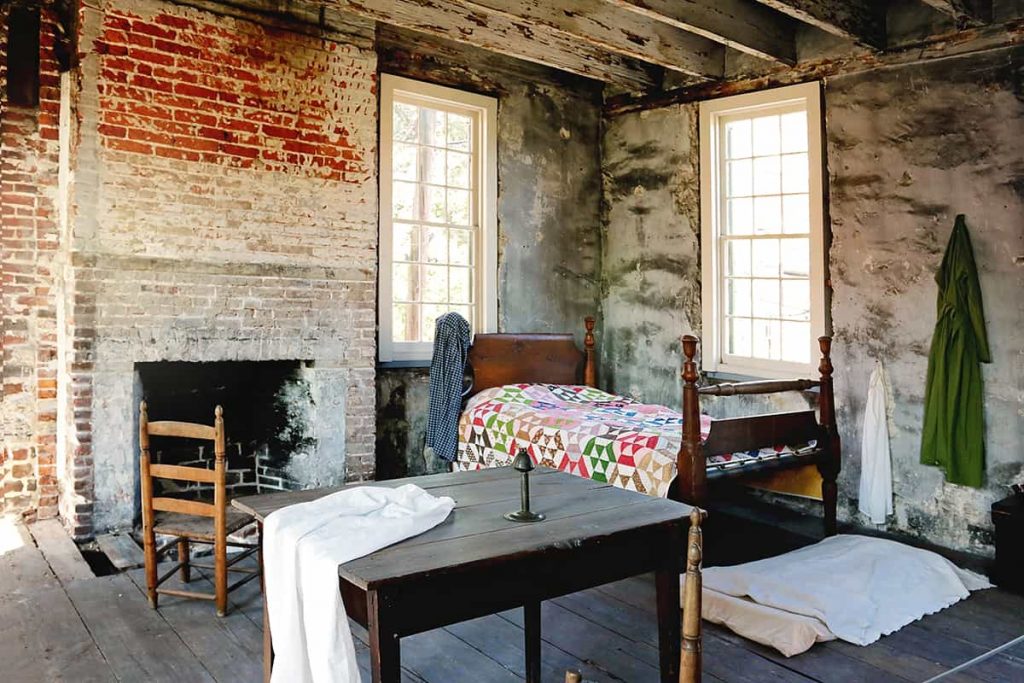
On the flip side, once you enter the main house, you’ll see how some of the wealthiest members of Savannah society lived in the early to mid 1800s.
It’s quite a stark contrast!
The home was clearly designed to entertain and is filled with collectibles and state-of-the-art amenities.
It even had plumbing on all three floors during a time period when employees at the White House were still carrying buckets of boiling water up the stairs for presidential families to use for bathing.
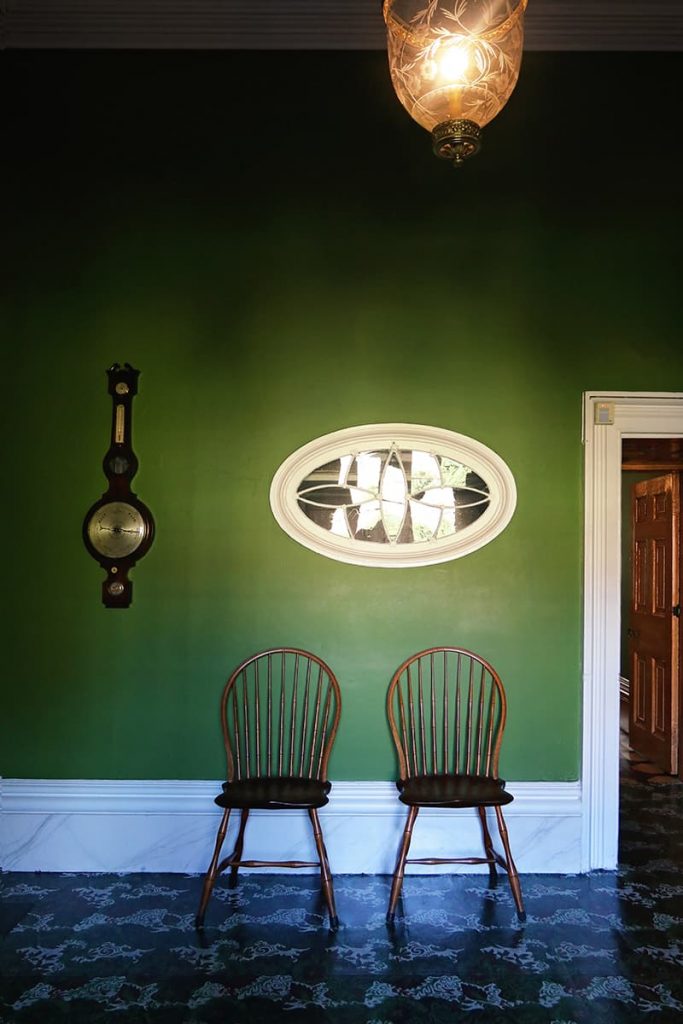
The entire house is fascinating, but I usually spend the majority of my time in the carriage house and the basement area, which is in near original condition.
The basement is where enslaved children were tasked with boiling huge pots of water over the fireplace, which they then poured into large containers that were used for laundry.
The children regularly dealt with scalding hot water and harmful substances, such as lye.
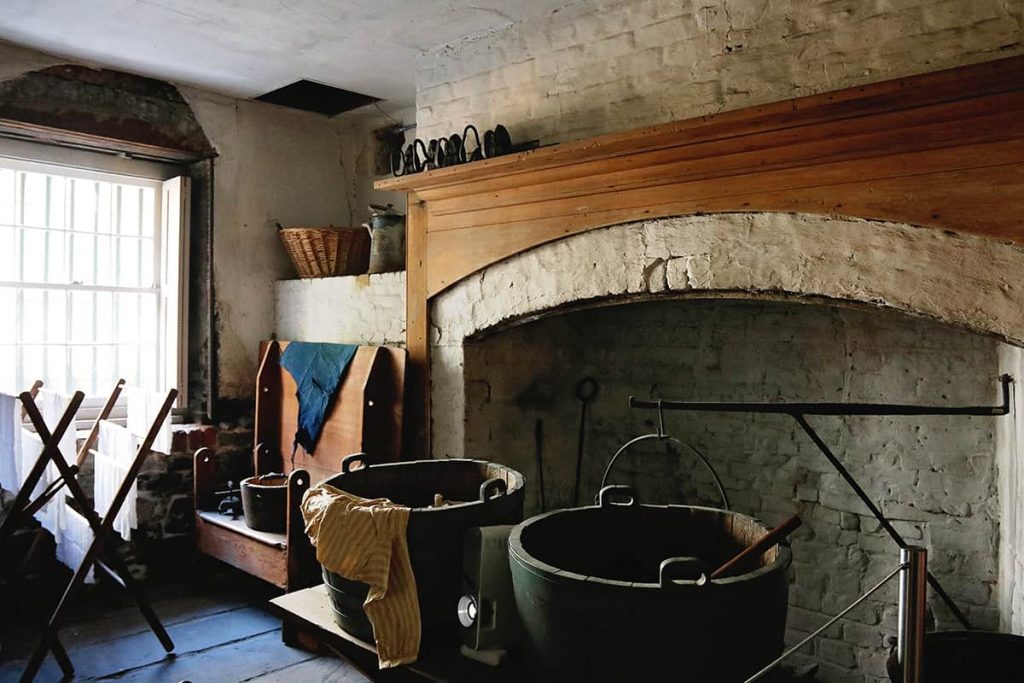
Both the Owens-Thomas house and the area that housed enslaved families are extraordinarily well-preserved.
In some areas of the main home, sections of the floors have been replaced with glass so you can see how the advanced plumbing system worked.
There’s ample signage throughout the home explaining how each area functioned.
If you want to learn what life was like for both wealthy and enslaved Southerners during pre-Civil War times, the Owens-Thomas House and Slave Quarters is one of the more “complete picture” educational tours you can take in Savannah.
Whenever I tour this house, I’m reminded that the early success of this city (and much of the Deep South, in general) was only made possible through the arduous work of enslaved laborers.
It’s a regrettable time in our country’s history, but it’s one that needs to be remembered so it won’t be repeated.
- Website: Owens-Thomas House and Slave Quarters
- Location: 124 Abercorn Street, Savannah, GA 31401
- Tickets: The $20 ticket is a 3-for-1 fee that also grants entry to nearby Telfair Academy and Jepson Center for the Arts. Pay close attention to the instructions that come with your tickets, as you’ll need to stop by in-person to reserve a time slot for your tour.
- Parking: Street parking in the immediate area is metered.
- Time to Allot: The self-guided audio portion of the tour only takes about 45 minutes, but you can explore the basement on your own and it’s filled with treasures. Plan to spend another 30 minutes or so there.
Local Insight: The upper level of the interior of the main house has a very unique indoor bridge, and the ceiling in the slave quarters still shows remnants of the original “haint blue” paint, which was made from indigo dye. The Marquis de Lafayette once stayed in the home and gave a speech from one of the balconies.
FAQ: What is Urban Slavery?
Savannah’s plantation owners usually resided in town — not in fancy plantation homes like you see in Gone With the Wind and similar movies. They hired overseers to run their plantation properties, which were located in marshy areas on the outskirts of Savannah.
The plantations often had unsanitary conditions, and it was all too easy to catch malaria in the rice fields, so for those reasons the property owners preferred to live in town.
Enslaved men and women often lived inside their enslaver’s urban homes and labored daily to keep the property running smoothly.
The concept is referred to as urban slavery, and it’s what you’ll learn about during the Owens-Thomas House and Slave Quarters tour.
First African Baptist Church Savannah
First African Baptist Church is yet another of my all-around favorite tours in Savannah.
It’s amazing how much information the guides pack into a relatively short time frame. Ninety minutes pass all too quickly, and — if you’re anything like me — you’ll find yourself wishing it lasted longer!
The FABC congregation first organized in 1733, and the building is a registered National Historic Landmark.
The tour focuses on notable pastors who served the church through the years, architectural features of the building, and the church’s important role in the Underground Railroad.
You’ll learn about the many hidden symbols found throughout the church and can even see where holes were punched into the floorboards on the lowest level of the building to circulate air for those hiding below.
The entire church was a labor of love that was constructed at odd times — often at night — by enslaved workers whenever they could manage to find free moments of time.
I don’t want to share too much, because I want you to go and experience this tour for yourself!
The oldest black congregation in North America began in 1773. May 20, 1775 the church was born with Rev. George Leile as its pastor; and constituted January 20, 1788 with Rev. Andrew Bryan, Pastor. The First African Baptist Church North America – Historic plaque by the front door
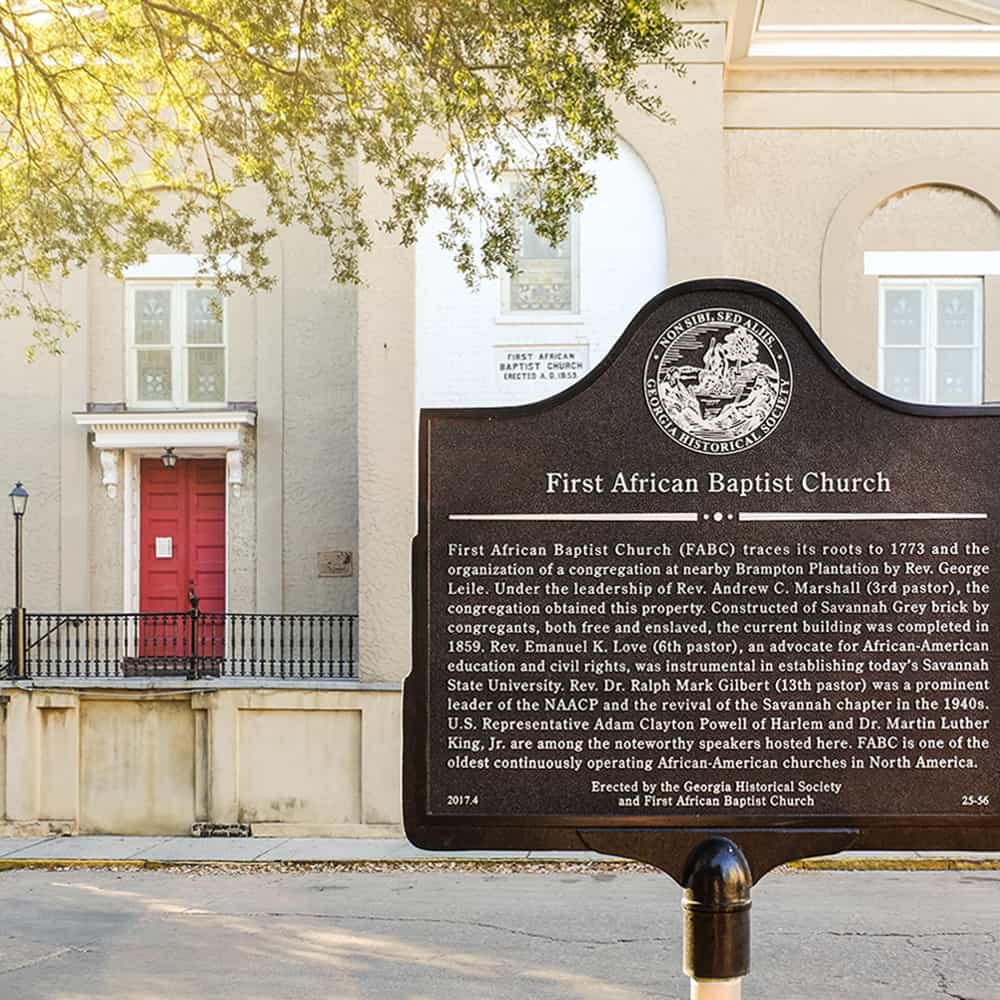
This is truly one of the most fascinating tours you can do in Savannah!
It’s another that repeatedly makes the cut as one of the top ten tours in my Savannah First-Timer’s Guide , and it’s one I practically insist on whenever I have friends or family in town for a visit.
The church has an archives room that contains a treasure trove of information about Savannah. I’d spend days in there if I could.
Guests are allowed inside the archives room, but you aren’t allowed to take pictures in that particular area.
- Website: First African Baptist Church
- Location: 23 Montgomery Street, Savannah, GA 31401
- Tickets: $12 – 15
- Parking: The church owns a private lot at the corner of Montgomery and W Bryan Streets where you can park for approximately $10 . The funds go into a work rehabilitation program for otherwise unemployable individuals. You’ll also find metered parking in the immediate vicinity.
- Time to Allot: Depending on the size of the tour group and how many questions people ask, the tour runs between an hour to an hour-and-a-half.
Local Insight: Most of the lighting fixtures in the sanctuary are original to the church. They’ve since been converted to electric, but were originally gas fixtures.
The Beach Institute
The Beach Institute is part of the King-Tisdell Cottage Foundation, which is dedicated to preserving African American history.
It’s officially recognized as the first school in Savannah specifically created to educate African American children after Emancipation.
The school opened in 1867 with a tuition of $1.00 per month.
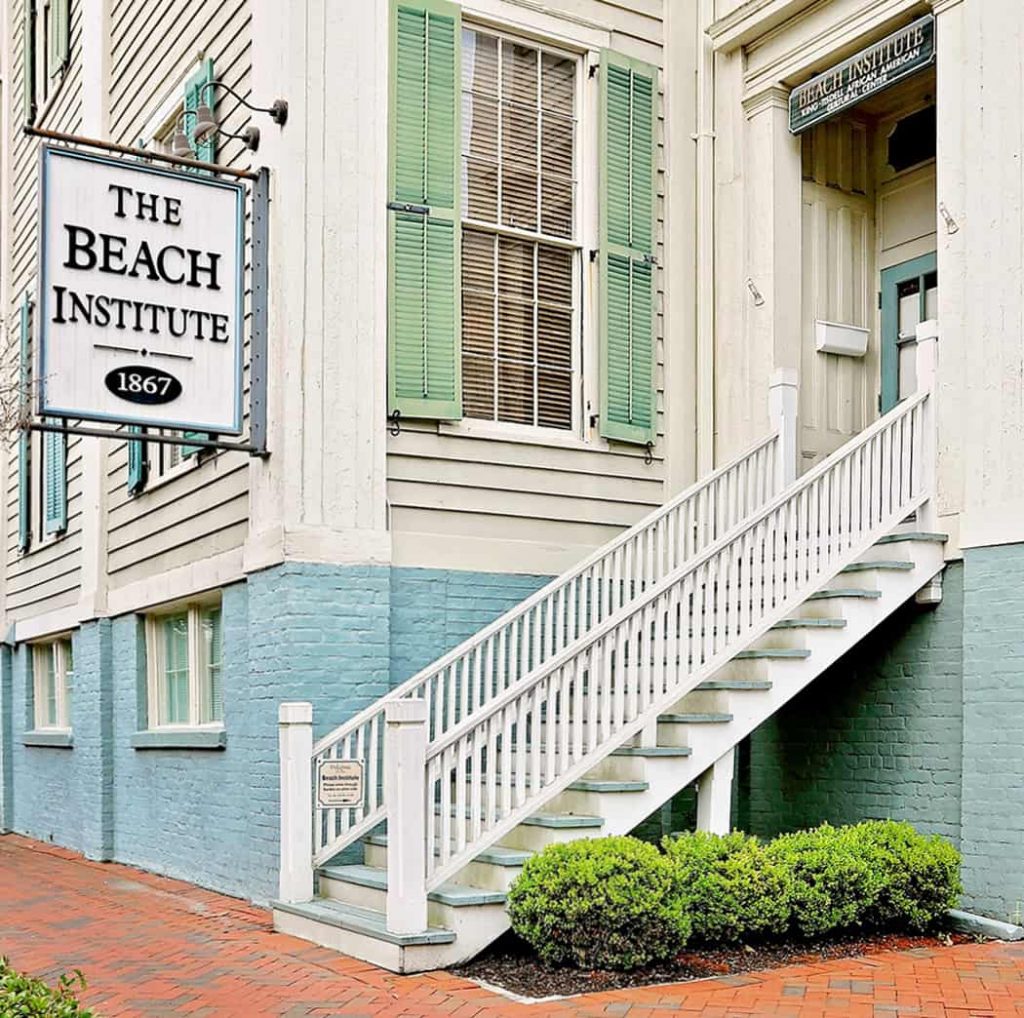
A visit to The Beach Institute is a must for any art or architecture lover.
This former school house hosts permanent and rotating exhibits featuring Black artists. You’ll find sculptures, contemporary art, and thought-provoking creations by local artists in the Savannah-Chatham public schools system.
My favorite exhibit features works by local sculptor Ulysses Davis.
Mr. Davis grew up in Savannah and was somewhat of a local legend. He taught himself to whittle and spent his free time carving small works of art.
He even created his own carving tools, which are on display in the museum.
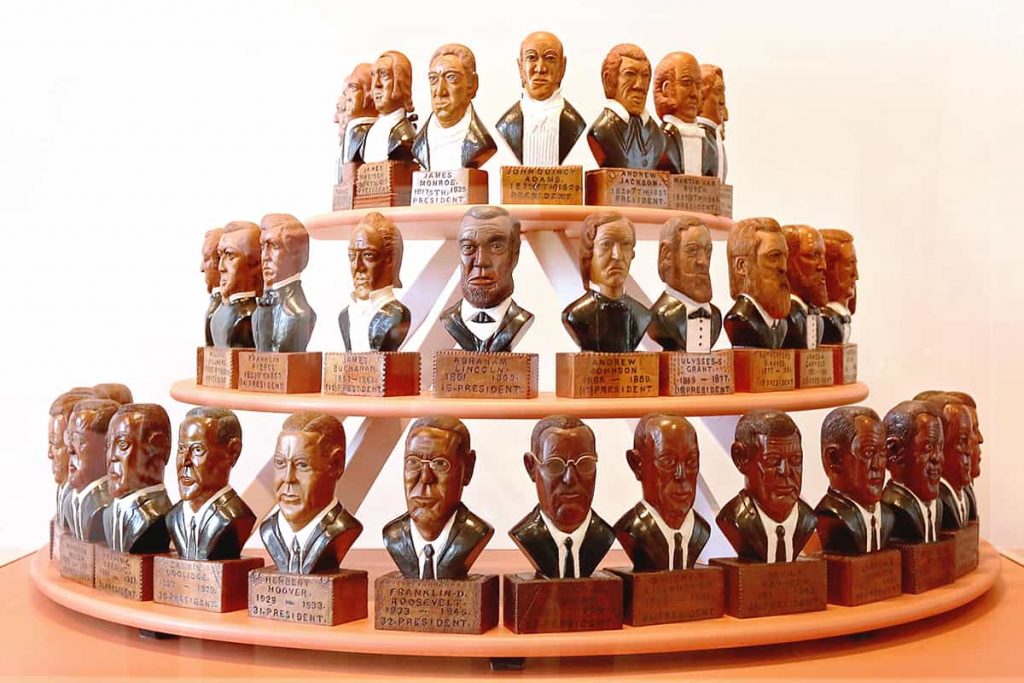
When he was in his forties, Davis opened a barber shop. He displayed his carvings on the interior and exterior of the shop, which was located near Bull and 45th Streets.
Unfortunately, the barbershop is long gone, but the original screen door has been preserved inside the museum.
Guests can also see a recreation of the shop’s interior.
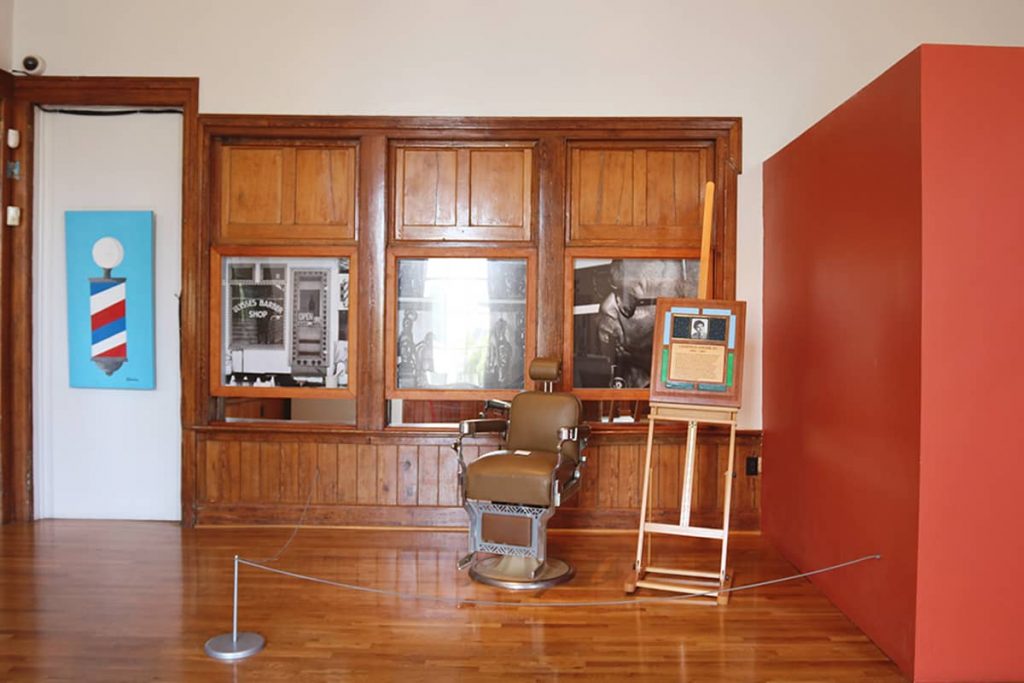
I’m not a very emotional person by nature, but some of the artwork in the rotating exhibits got me a little teary-eyed.
I could sense the raw emotion in many of the pieces — especially in some of the Black Lives Matter displays done by local high school students.
It’s easy to sense the anguish teens are feeling in light of current events in Georgia — particularly the Ahmaud Arbery case.
Emotional moments aside, the carvings by Mr. Davis are a local treasure.
National museums competed for the right to own his works, but the family accepted a lower bid in order to keep the collection intact in Savannah — knowing that’s what Davis himself would’ve wanted.
The museum is primarily self-guided, but there are times when docents are available to answer questions.
I was lucky enough to be able to speak with native Savannahian named Leitha (I didn’t get her last name) during my time in the museum, and she was very knowledgeable about Davis’ creations.
- Website: The Beach Institute & King Tisdell Cottage
- Location: 502 E Harris Street, Savannah, GA 31401
- Tickets: From $7 – $10
- Parking: Street parking in the immediate area is free.
- Time to Allot: Plan to spend 30 to 45 minutes on site.
Local Insight: The architecture of this building is quite impressive. Wait until you see how tall the windows and doors are on the upper two levels!
King-Tisdell Cottage
This beautiful Victorian-style cottage was built in 1896 and was originally located on Ott Street.
It was owned by an African American couple named Eugene and Sara King and later by Mrs. King and her second husband, Robert Tisdell.
The Kings and Tisdells were entrepreneurs and prominent members of the Savannah community. Mrs. King ran a confectionary out of the house.
If you love history, then you’ll enjoy visiting this cottage.
It’s currently the only African American historic home available for touring in Savannah.
While it’s not as fancy as some of the other homes you can tour in Savannah, you’ll learn fascinating stories about the lives of working class Savannahians.
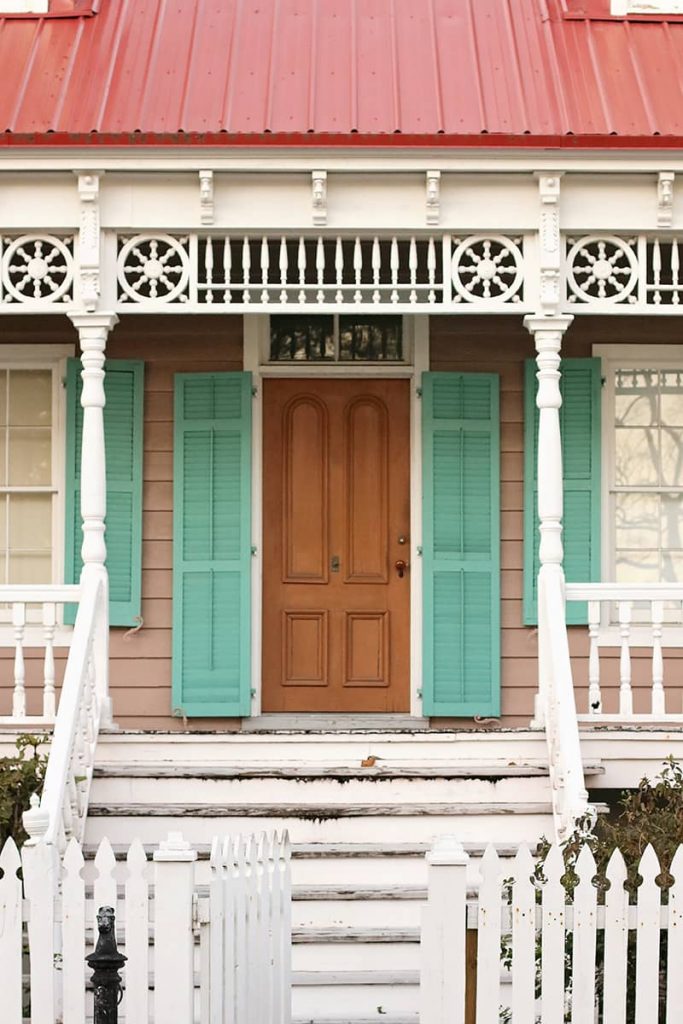
This house contains one of the best public displays of collections from Westley Wallace Law (W.W. Law), local historian and former head of the NAACP in Savannah.
He collected thousands of photographs documenting the lives of African Americans in Savannah, and one full room in the home is dedicated to his findings.
- Location: 514 E Huntingdon Street, Savannah, Ga 31401
Savannah African Art Museum
Founded in 2016, this museum in relatively new to Savannah.
It’s located inside a beautiful historic home on 37th Street and is filled with artifacts from the collection of Mr. Donald Kole.
Most of the pieces showcased within are ceremonial and spiritual items from West and Central Africa.
There are items from 28 different African countries and 180 unique cultures — some permanent and some in rotating collections.
The 1st floor houses objects from West Africa and the 2nd floor covers Central Africa.
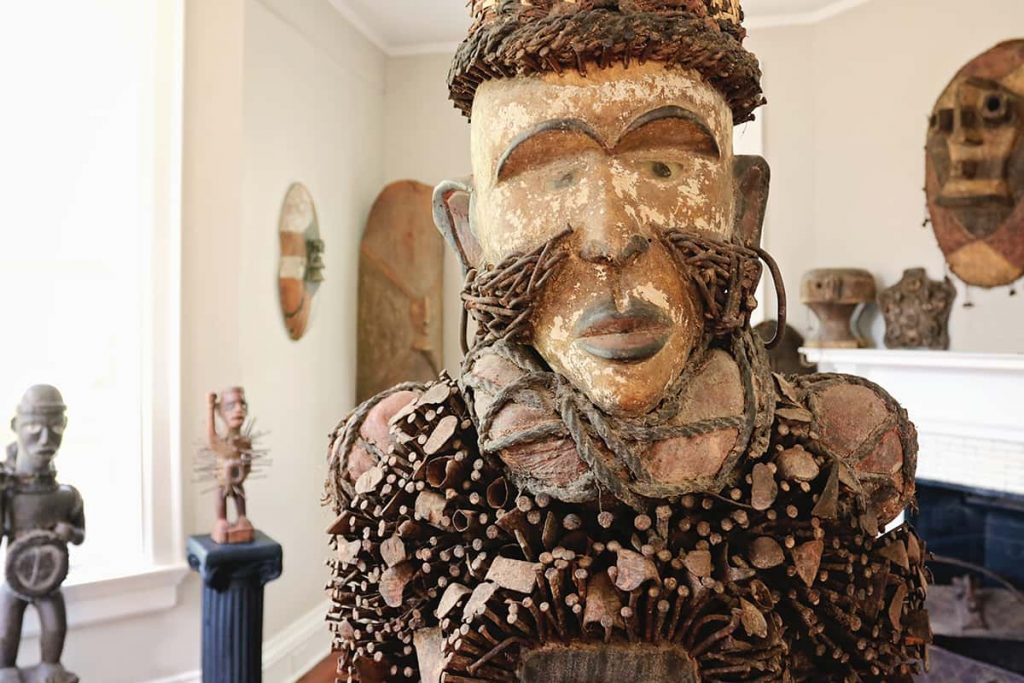
In touring the museum, you’ll learn about the various roles masks, garments, and costumes played in secret societies throughout African culture.
Most items are carved from wood or made of metal, but there are a few samples of pottery and ceramics also on display.
For example, a recent rotating exhibit called “ROOTS: History | Hair | Culture” focused on the cultural significance of African hairstyles throughout history.
Countless American families descended from men and women who arrived in this country from Africa via the Transatlantic Trade Route.
Those families were forced to leave their possessions — and much of their cultural heritage — behind.
This museum contains an incredibly diverse collection of art from many of those African countries. It’s a place where descendants of enslaved families can go to learn more about their heritage.
The museum operates as a non-profit and is completely FREE to the public. It’s a true hidden gem and an incredible gift to anyone who lives in — or visits — Savannah.
My tour guide was Billie Stultz, a recent SCAD graduate and Executive Director of the museum. She’s definitely a walking encyclopedia on the topic of African traditions!
- Website: Savannah African Art Museum
- Location: 201 E 37th Street, Savannah, GA 31401
- Tickets: FREE (you can make donations, if moved to do so)
- Parking: Street parking in the immediate area is free, and there’s also a small off-street parking lot.
- Time to Allot: The guided tour takes approximately one hour.
African American Monument Savannah
This monument in downtown Savannah is located on River Street and depicts an enslaved family who has just been freed.
Their faces are solemn, and the remnants of a broken chain lies at their feet.
It was the first monument in the Historic District to publicly acknowledge the City of Savannah’s role in the institution of slavery — an admission that didn’t come until the early 2000’s.
The monument almost wasn’t approved, since Maya Angelou’s quote at the base of the statue was considered too controversial for the tourism-driven city of Savannah.
Ms. Angelou amended her quote with one additional line at the end, and it was approved after that final addition.
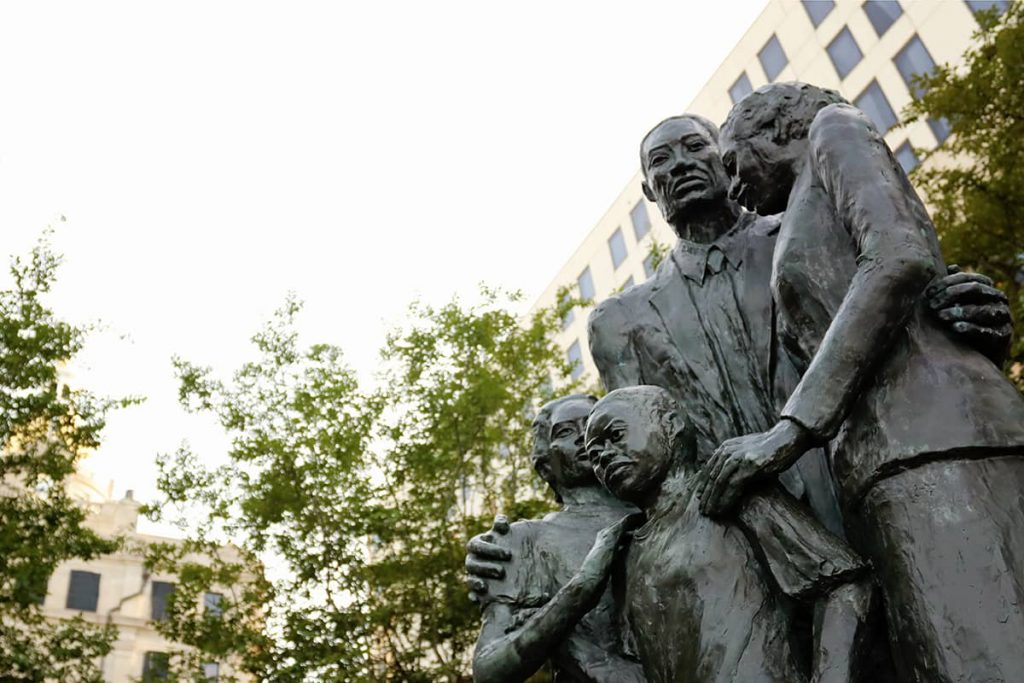
We were stolen, sold and bought together from the African continent. We got on the slave ships together. We lay back to belly in the holds of the slave ships in each others’ excrement and urine together, sometimes died together, and our lifeless bodies thrown overboard together. Today we are standing up together, with faith and even some joy. Maya Angelou – The African American Monument
River Street isn’t just a place to stroll around with a to go cup on St. Patrick’s Day; it’s the place where thousands of enslaved families first set foot on the ground in the United States.
This monument is one of the few places along River Street acknowledging the terrible conditions those enslaved men, women, and children endured before arriving into the port of Savannah.
- Location: 1 W River Street, Savannah, GA 31401
- Tickets: None required; it’s a public monument
- Parking: Parking on River Street is hard to come by. There are a couple lots, but the spaces fill quickly. You can try to park along the E Upper Factors Walk ramp (near Vic’s on the River restaurant) and walk to it. The two closest city parking garages are the Whitaker Street Garage and the Bryan Street Garage. Here are some of my top Savannah parking tips .
- Time to Allot: Plan to spend 5 to 10 minutes on site.
Local Insight: There’s a very unique counterpoint to this memorial tucked away in a lane on Savannah’s east side. It’s known as the Black Holocaust Memorial, and it was created by local artist James “Double Dutch” Kimball.
Related Reading: Why Savannah’s African American Monument was so Controversial
The Weeping Time
“The Weeping Time” was a terrible event that occurred in Savannah. It ended up being the single largest sale of enslaved people in American history.
It happened when plantation owner Pierce Butler, of the Butler Plantation near Darien, GA, squandered his inheritance and was forced to sell off much of the property he owned.
That “property” included enslaved men, women, children. It even included 30 babies.
The sale, which was brokered by Savannah’s former Chief of Police, Joseph Bryan, was advertised in newspapers far and wide. Potential buyers flocked to Savannah to attend the two-day auction, which was held at the Ten Broeck Race Track on Savannah’s far west side.
Enslaved families who had spent their entire lives together on the plantation were separated and sold to the highest bidder in an attempt to settle Butler’s gambling debts and stock market losses.
Between 429 – 436 enslaved individuals were sold during the two-day event.
Since rain poured from the skies the entire two days of the sale — and many say God was weeping for the inhumanity of it all — the event has become known as “The Weeping Time”.
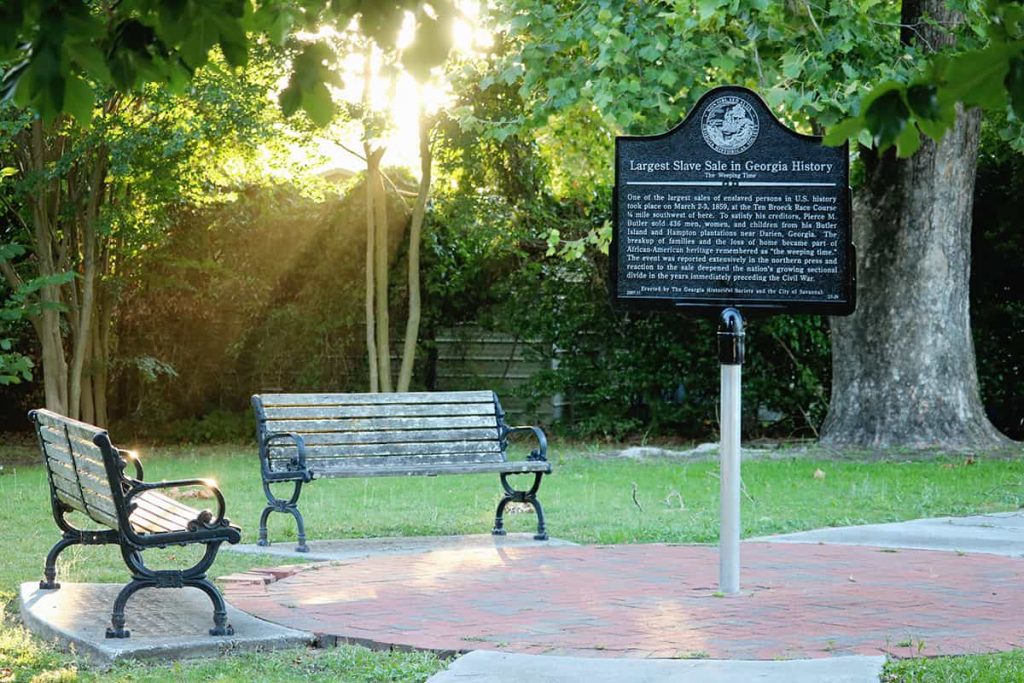
The blades of grass on all the Butler estates are outnumbered by the tears that are poured out in agony at the wreck that has been wrought in happy homes, and the crushing grief that has been laid on loving hearts . Q.K. Philander Doesticks , What Became of the Slaves on a Georgia Plantation: Great Auction Sale of Slaves at Savannah, GA , 1863
The race track is long gone, but you can find a Historic Marker commemorating the event 1/4th of a mile from where the sale took place.
I’ve already mentioned that few places in Savannah make me emotional, but this is one spot that brings tears to my eyes.
The marker sits on a beautiful sliver of land with two nearby benches where you can contemplate one of the darkest moments in this country’s history.
It’s a peaceful spot, located right in the middle of a typical west side Savannah neighborhood full of modest, single-family homes.
As you can see in the photos above, it looks very beautiful at sunset.
- Location: The intersection of Augusta Avenue & Dunn Street, Savannah, GA 31415
- Tickets: None needed. It’s a public area and on city-owned property.
- Parking: Parking in the immediate area is free, but a bit difficult to find. There’s no dedicated parking for the site, and it’s right off of a fairly busy road. You can park on Dunn Street, but please be respectful of the sweet neighbors who live there and don’t block access to and from their homes. NOTE: This is an area I’d advise first-time visitors to avoid after dark.
- Time to Allot: Plan to spend 10 to 15 minutes on site.
There is currently a contentious debate about proposed use for land surrounding the site of the original Weeping Time event, which is slated to house a Salvation Army homeless shelter.
For the record, I’m against using that location for that purpose.
I would like to see The Weeping Time property and the surrounding land utilized as a memorial site and educational center, similar to the Penn Center on St. Helena Island in S.C.
Related Reading: Unearthing the Weeping Time: Savannah’s Ten Broeck Race Course and 1859 Slave Sale
Colored Carnegie Library
Known as the “Library for Colored Citizens” or the “Colored Carnegie Library”, this was one of the only spaces in Savannah where Black families had public access to books in the early 1900s.
Blacks weren’t allowed in the city’s main library at the time (the Bull Street Library), since the library system in Savannah didn’t fully integrate until 1963.
The library was funded by a Carnegie grant of $12,000.
The Colored Library Association of Savannah used donations from the community to purchase the land, and then the building was completed in 1915.
It closed in 1997 due to a water leak in the roof, but reopened a few years later after undergoing a massive renovation that cost $1.3 million.
It still operates as a library today.
Supreme Court Justice Clarence Thomas wrote in his memoirs that he spent many hours in the library doing research as a young adult.
He returned to Savannah in 2004 to help celebrate the library’s reopening.
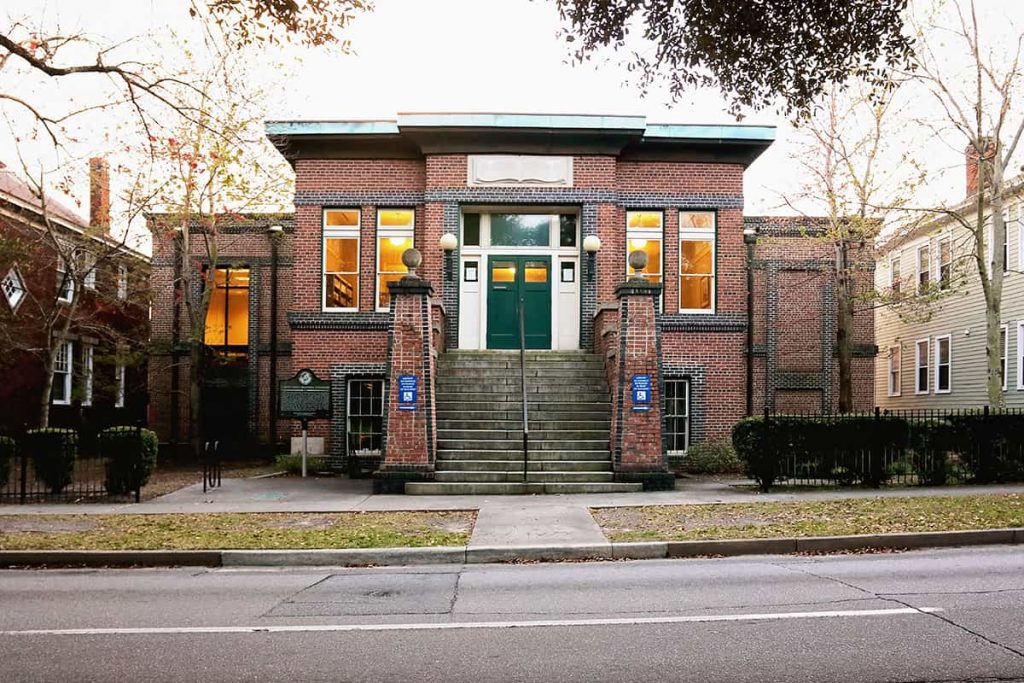
The library was listed on the National Register of Historic Places in 1974. It’s currently part of the Live Oak system of libraries.
- Website: Carnegie Library
- Location: 537 E Henry Street, Savannah, GA 31401
- Tickets: None needed. It’s a public library.
- Time to Allot: It’s an active library, so it isn’t particularly meant for touring. If you go, please be observant of those who are there for its intended purposes. If you only stop by to see the exterior, plan on spending 5 to 10 minutes.
Related Reading: A Local’s Guide to Laurel Grove South
Ralph Mark Gilbert Civil Rights Museum
On Martin Luther King, Jr. Blvd., in what was once the heart of Savannah’s Black-owned business community, you’ll find a three-story building full of exhibits on the era of Jim Crow, racial injustice, and the Civil Rights movement in Savannah.
The exhibits contain historic photos, documentaries, and interactive pieces about discrimination, boycotts, the role of the KKK in the South, and the birth of the NAACP in Savannah.
You’ll also learn about some of the biggest trailblazers in Savannah’s Civil Right movement, including Dr. Ralph Mark Gilbert (who served as the pastor at First African Baptist Church for 16 years), Westley Wallace Law aka W.W. Law, and Rev. Hosea Williams.
Displays posted throughout the museum show the horrific treatment of Blacks in the South during Jim Crow times.
You’ll see signage pulled from local businesses denoting “Whites Only” and “No Negroes Allowed” and displays showing what it was like to sit at a lunch counter during the time of segregation.
Even the building that houses the museum is historic.
It originally served as the Wage Earners Savings Bank, which was founded by Blacks in the early 1900s. It was instrumental in funding many Black-owned Savannah businesses.
The museum does an incredible job of educating visitors on Civil Rights issues as they relate to Savannah, specifically.
It will open your heart to the struggles many faced on a daily basis in Savannah, some of which still exist in the South today in one form or another.
Many of the docents are locals who lived through the Jim Crow era. They provide personal accounts of their experiences in Savannah.
The museum offers an incredible opportunity to speak with them and hear their accounts first-hand!
- Website: Ralph Mark Gilbert Civil Rights Museum
- Location: 460 Martin Luther King, Jr., Blvd., Savannah, GA 31401
- Tickets: $6 to $10
- Parking: Street Parking in the immediate area is metered, or you can park at the nearby Visitor Center and walk.
- Time to Allot: 2 hours
Local Insight: Savannah has a long history of conflict-free protests regarding social injustices. During the Jim Crow era, the local Black community worked together using peaceful methods to enact positive changes, primarily due do the leadership of W.W. Law. In recent years, when other cities saw violent protests and rioting during BLM events, Savannah’s protests were peaceful and without incident.
Guided Black History Tours: Led by Locals
Most of the spots listed above are places you can tour on your own.
If you’d prefer a guided tour where you’ll be able to see multiple points of interest, I recommend exploring the city with a local who can provide first-hand knowledge regarding Black culture in the Deep South.
There are some incredible guides in Savannah who can escort you through the city while providing personal accounts of their experiences as direct descendants (in many instances) of the Gullah Geechee people.
Underground Tours of Savannah
The most popular tour led by Underground Tours of Savannah is the From Slavery to Freedom Tour .
It’s a walking + riding tour through downtown Savannah showing where African Americans lived in the Historic District during the late 1700s to mid 1800s and how they were treated during that time period.
Sistah Patt is the heart and soul of Underground Tours.
She’s incredibly knowledgeable and presents Savannah’s African history in a very engaging manner.
Folks who take her tour rave about her storytelling ability, as well as her bigger-than-life personality…
We just did the Sistah Patt tour today! She is so warm and friendly. Very engaging storyteller and she speaks matter of factly. We learned so much on the tour. The history of the brick walks and honestly the way Savannah tries to deny the slave history was fascinating. Loved! Melissa C. – via my Savannah First-Timer’s Guide private Facebook group
The tour will take you on a few blocks through the NW section of the Historic District. You’ll stop at points of interest such as the African American Monument (mentioned above) and the Cluskey Vaults .
Sistah Patt’s current project is working as an advocate to encourage the renaming of two of Savannah’s squares . Calhoun Square and Whitefield Square were named after men who were avid supporters of slavery.
- Tour Info: From Slavery to Freedom
- Location: 223 Martin Luther King, Jr. Blvd (please verify on your ticket receipt)
- Tickets: Approximately $60 for 2 guests
- Parking: Street parking in the immediate area is metered, or you can park at the nearby Visitor Center and walk.

Footprints of Savannah Tour
This tour is led by Vaughnette Goode-Walker, aka “Sistah V”.
It’s one I’ve yet to try but I’m looking forward to going and have only heard good things about it! I’ll add some photos once I’ve been.
Ms. Goode-Walker is the director of the Ralph Mark Gilbert Civil Rights Museum. She’s also a local historian who has authored two books about Savannah.
Additionally, she was a key consultant in the King Tisdell Cottage restoration and its conversion into a museum.
When I last spoke with Mrs. Goode-Walker (spring of 2023), she had placed her walking tours on hold while busy with an addition to the Civil Rights Museum. You might want to opt for Sistah Patt’s tour in the meantime.
- Facebook: Footprints of Savannah
- Location: Contact for meeting point
- Tickets: Contact for rates
- Time to Allot: 1 hour
Day Clean Journeys Tour
I haven’t done this tour yet, either, but it’s another I look forward to trying.
It’s led by local professor and historian Dr. Amir Jamal Touré. The tour comes highly recommended by Leitha, who was the docent I met while touring The Beach Institute.
Dr. Touré has been recognized by the State of Georgia as an “Outstanding Georgia Citizen.” He is known for his expertise on the Gullah Geechee community.
He was actually the model used to create the male father figure in the African American Monument!
Day Clean (dey-kleen): Each day is a new day; each day starts anew; no matter what occurred yesterday – today is a new day! Gullah Geechee Philosophy and meaning behind the name “Day Clean Journeys”
- Facebook: Day Clean Soul
I know I’ve covered a lot of information in this post, but so many visitors focus on ghost tours while they’re in Savannah that I think the more important cultural sites are often overlooked.
Here’s a free printable to help you remember each of these sites as you make your way around the city.
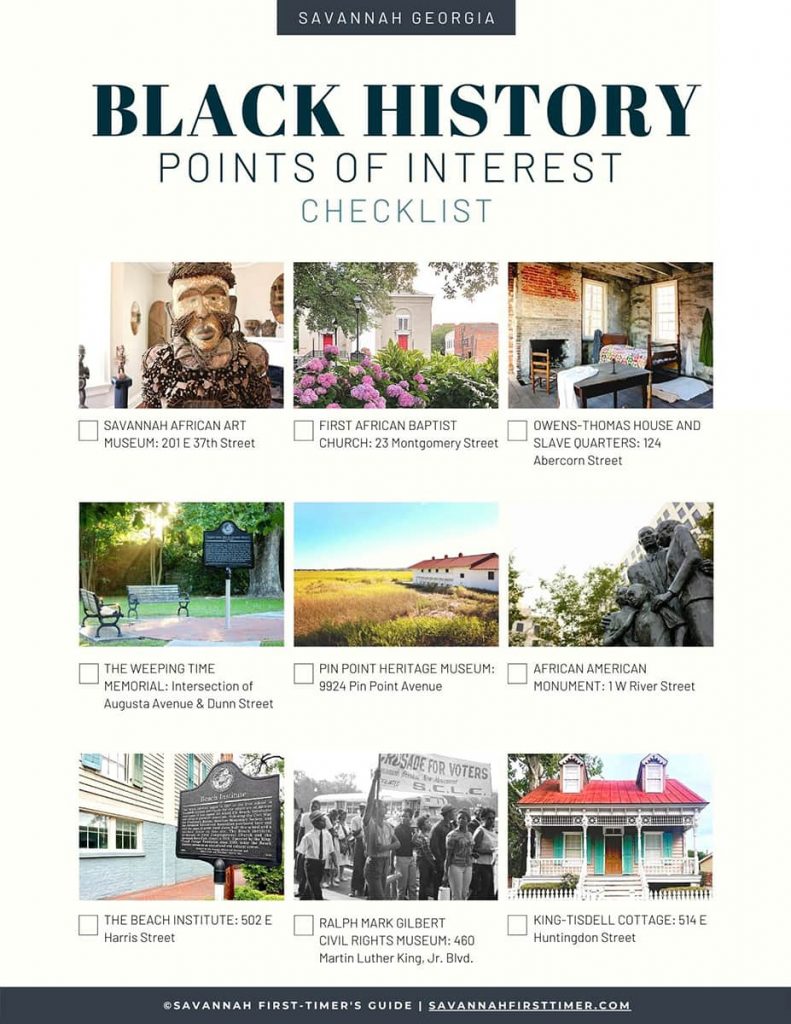
Savannah Travel Guide
Ok, that wraps up my thoughts on some of the best Black history tours in Savannah. If you’ve experienced an informative tour that I missed here, please let me know in the comments below!
If you’re looking for resources to plan a trip to Savannah, here are a few I’ve created…
- Savannah First-Timer’s Guide – My ebook combines my most helpful tips from this website into a downloadable guide. You’ll also gain access to my (very active) private Facebook group with your purchase. Use it to pick my brain about your upcoming travels or read trip reports from others who have recently visited.
- Savannah FTG Free Resources Library – Get a free printable list of “50 Things To Do on Foot in the Historic District (No Car Needed!),” plus more fun goodies.
For more things to do in the city, check out my Savannah trolley tour reviews or read about the best Bonaventure Cemetery tours .
Do you have any questions about Black history tours in Savannah? Let me know in the comments below!
Love this post? Pin it now to save for later!
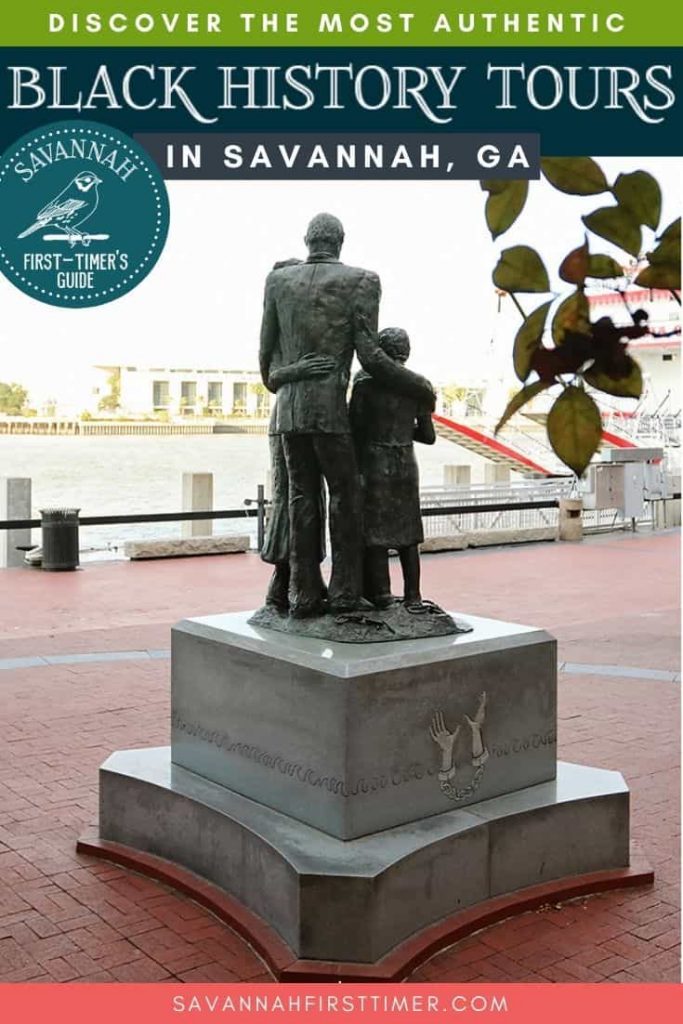
16 Comments on Black History Tours Savannah: Which Ones Are Best?
What great info and love all the bits of history that I wasn’t aware of! I’d definitely want to visit Pin Point and sunsets on Butter Bean Beach with that name! I had no idea the plantation owners usually lived in town. I always assumed they lived on the plantations. So informative!
I thought the same thing until I went on the Owens-Thomas tour! That’s one of the nice things about Savannah…there’s always something new to learn.
This is such an informative article and I love how there are a lot of educational places in Savannah. I’m definitely keeping this post handy for when I return there. 🙂 Thank you for sharing!
This is such an informative post and I found it very emotional. I find it hard to understand why humans treated other humans like this. I hope this never happens again and it is great there are so many museums and memorials to remind us. All lives matter.
This is an absolutely incredible post, I can’t wait to get back to USA so I can visit Savannah! I can’t imagine how much you learn on one of these tours. Definitely bookmarking for later, thanks for sharing!
What a fantastic post. I had not really heard of Urban slavery before (but as soon as I read it, it made sense.) It is sobering to visit sights like this, rather than just reading about them.
The Savannah African Art Museum looks really interesting, too.
This is so informative and a great guide to which tours to do in Savannah. I’ve never been to GA but would love to learn more about the history
Its great to explore the history of a country and its people, and gain a greater understanding of how it came to be.
Hi, Somewhere we saw a black history tour led by a man..and will do private tours. Do you know about this tour? Thanks, Judy
Hi Judy! I believe that’s Dr. Toure, who is mentioned at the bottom of the post under Day Clean Journeys. Try reaching out at this number: (912) 220-5966
Erin, thank you for this incredible post. It is so informative and is such an important part of US history that is oftentimes sadly overlooked or maybe even omitted. Thank you for bringing attention to these places that can be so emotional. and tough to visit. I will definitely share this with friends and family that visit Savannah.
wow! I had no idea there were so many tours available to learn more about Black History in Savannah. Every time I read one of your posts, I realize we need to get back to Savannah–esp considering we live in GA! Thanks for all the information, I look forward to taking some of these tours. It’s so important we learn more about this part of our country’s history.
Thank you for this well researched informative article. I have just returned from my first visit to Savannah and didn’t read this until I returned home. I was able to visit a few of the mentioned sites. Your photos are much better than mine!
I’m glad it was helpful! Since I live downtown, I’m able to visit the museums at random times when they aren’t very busy, so that makes it easier to get good photos 🙂
Checking today, the underground tours of Savannah is no longer listed
I messaged Sistah Patt, so hopefully she’ll be able to fix the site quickly. She is still offering tours. Until her site is back online, you could try reaching out to her via her company’s FB page: https://www.facebook.com/SLAVESINTHECITY
Leave a Reply Cancel reply
Your email address will not be published. Required fields are marked *
Save my name, email, and website in this browser for the next time I comment.
40 Acres and a Mule Tour
bringing you the story of where the quest for racial equity began in america .
Book a tour at
(912) 659-4383 or
One of the "Ten Best Tours in Savannah" -- Conde ' Nast Traveler

The house in which "40 acres and a mule" was conceived on January 12, 1865.
"Highlight of our trip. After we took this tour we cancelled our other tour. It was that good. Everything we wanted to know about Savannah's history we learned on this tour. Fritz Rumpel took us back in time and he also showed us artistically, intellectually and even spiritually the roots of Savannah's wealth and growth. " -- Cassandra F., Atlanta
"Can’t stop thinking about this tour! Savannah's squares and nearby buildings hold seldom-told stories of events with civic and national impact. This tour's knowledgeable creator and guide weaves stories of six squares into a fascinating whole. You won't be bored, and you'll think about what you've seen and heard for days afterward. Excellent value!" -- Diane S., Cincinnati
"Excellent, the unvarnished truth about Savannah! A thinking person's tour! No silly stories about ghosts, old women in hoop skirts or pirates, but real events that affected real people." -- Keith G., New York
"Every person living in America should hear the emotional story that Fritz relays. We are still reflecting on how much this tour moved us 4 months afterward ." -- Corey C., Seattle
"Fritz is awesome! He is an energetic, enthusiastic, and witty storyteller who gives a warts-and-all account of Savannah's history from the founding through the Civil War. African-American history gets its due -- No sugar-coating the slavery stuff, unlike in other places around the South. You'll learn a lot about Tomochichi, too - the Native American leader who helped the colonists get established. And, true to the tour's name, you'll learn how the proposal to give freed blacks "forty acres and a mule" was born in Savannah, and who deserves the credit. (Hint: Not Union General William T. Sherman). A really valuable private tour by someone who is passionate about his hometown. Well worth the $40 each. -- Matthew Z., West Chester, PA

This is the story of Savannah and its significant role in promoting slavery throughout the South and it's the story of the triumph over slavery through faith, culminating in a historic meeting (as depicted in the painting above) in which the aspirations of four million Black Americans became expressed in a single phrase: "40 Acres and a Mule."
You will visit six of Savannah's most historic squares as you learn the truth about crucial events that took place in the city between 1733 and 1865 and that shaped the character of Savannah . Here are only a few of the things you will learn about:

Franklin Square
In dramatic scenes at this square that were set 80 years apart, an enslaved African-American minister and 500 Black children demonstrated their belief in freedom through faith.

Ellis Square
Blacks and whites mingled freely in this Savannah crossroads in the antebellum period at a time when they bought and sold their goods here at the city market. But after the Civil War broke out, the granddaughter of one of those vendors escaped to the Union side.

Johnson Square
The first square of Savannah served in the 1850s as the address for the city's pre-eminent slave trader, who promoted one of the largest sales of human beings in American history: "The Weeping Time."

Wright Square

This monument was built to honor the man who ensured that cotton would be king in Savannah. But the site chosen for the structure desecrated the grave of the most revered person of color in the city's history.

Chippewa Square
The statue honors Georgia's founder, whose vision for his new colony did not include slavery.
Yet on the eve of the Civil War the Vice President of the Confederacy gave a speech just off the square stating that slavery is the cornerstone of the new Rebel government.

Madison Square
It was in the beautiful house overlooking this square where General William T. Sherman set up his headquarters that the U. S. government asked Black Americans for the first time in history, "How can you take care of yourselves?" Their answer resonates to this day.
The 40 Acres and a Mule Tour walks you through the history of Savannah that not only made this meeting on January 12, 1865 possible but also inevitable: It could not and should not have happened anywhere else.
From Franklin Square to Madison Square, from First African Baptist Church to the Green-Meldrim House, you will learn the intertwined history of Savannah's promotion of slavery and the rise of the Black church, the two forces that drove the city's narrative toward the triumphant 40 Acres and a Mule meeting.

Private tours are our speciality.
.jpg)
"My wife and I had the great pleasure of taking a tour with Fritz during our recent visit to Savannah.
"Things we enjoyed:
Punctuality. Fritz was waiting at the prearranged meeting spot by the time we arrived. He had provided a great description of himself. There was no confusion.
Historical knowledge. Fritz had an amazing knowledge of the issues and was able to weave a very compelling story which allowed my wife and I to clearly visualize the time and place.
Multi media. Fritz used audio (music, speeches), visual pictures and his verbal descriptions to us to understand and see.
Tour route. The tour route was fabulous. All sites discussions started with finding a bench to sit and relax and then listening to Fritz’s story.
Group size. There was just the two of us on the tour. After the tour, we talked to our B&B owner, who had recommended the tour and learned Fritz only will do small tours.
After glow. After the tour, my wife and I spent the evening’s dinner discussing the issues Fritz had presented and had a wonderful time reviewing the imagery Fritz had created during the tour.
"Things we didn’t enjoy:
It ended.
"We would strongly recommend Fritz’s tour to anyone who visits Savannah." -- Stuart M., Toronto
More Reviews
Footprints of Savannah Walking Tour
“a walk along the forgotten history footpaths of the city”.
Learn about Urban slavery, the Slave Trade and the Cotton Trade in Savannah. See the remnants of the 1860s slave trade and a building that once was a slave Mart that became a Freedmen’s School.
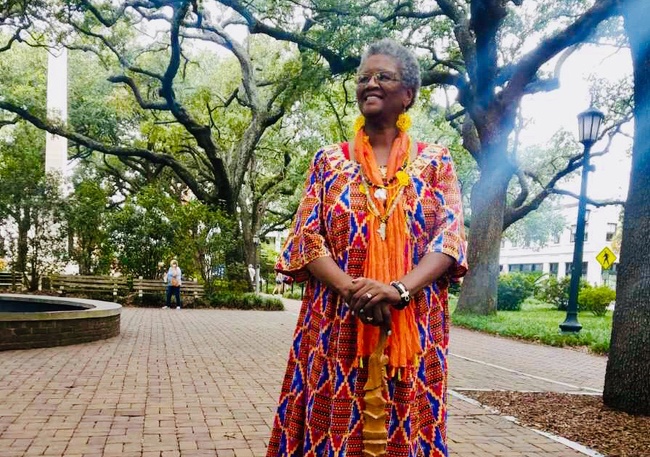
Conversation, questions and comments about the History are encouraged along the 90 minute Walk. Limited to four to six guests until further notice. Private Tours available for an additional fee.
Footprints of Savannah Walking Tour Fee accepted at the end of the Walk.
Adults $30 per person (Gratuity not included) Children under 12 years old ($10)
Tours are reserved by phone only and confirmed by texts. 912-695-3872 Based on availability. Tours available on Sundays currently.

Footprints of Savannah Virtual Tours
For more information and to book reservations call (912) 695-3872. Virtual Tour Fee: $15 per person. Pay online after booking. Virtual Tour reservations only. Email: [email protected] to receive a Zoom link for the Virtual Tour.
- TRENDING TOUR
Savannah Slavery to Freedom Tour
Walking Tour Featuring Master Gullah Geechee Truth-Teller ‘Sistah Patt’
Quick Details
- Users Ages: 3+ y/o
Embark on a remarkable journey of Savannah’s past with the Savannah Slavery to Freedom Tour featuring Savannah’s own Master Gullah Geechee Truth-Teller ‘Sistah Patt’
This is a mesmerizing tour of the African American journey from slavery to freedom during the Antebellum days (1748-1864) on the coast of Savannah.
- The tour begins aboard a Gray Line vehicle before embarking on a walking tour that will last between 1.5-2 hours along River Street, Factor’s Walk, Bay Street, and Johnson Square.
- Learn about the history of the West African tribes that were routed to Savannah and used in slave labor to build the warehouses along River Street.
- See where cotton was shipped out to the United Kingdom and storages that look similar to ‘slave holding bins’ in Ghana, Senegal, Gambia, and Benin, West Africa.
- Stand where slaves were auctioned off in Johnson Square.
- Learn about the incredible journey to freedom as you board the vehicle and travel past the Second African Baptist Church.
- (843) 628-2006
- [email protected]

The Legacy of Cotton: Plantation Tours in Savannah
Embark on a journey through the deep roots and complex tapestry of the South with Savannah Cotton Plantation Tours . Strolling through the storied grounds and historic homes, you’ll uncover the poignant tales woven into the fabric of Georgia’s legacy. Meet the Southern plantation tours that pull back the veil on cotton’s defining role in Savannah’s chronicle, and immerse yourself in a poignant chapter of American history. As you navigate through cotton plantations in Georgia , your connection to Savannah’s enduring spirit and rich culture will be indelibly strengthened.
Key Takeaways
- Gain insights into the historical significance of cotton in shaping Savannah.
- Experience the architectural grandeur alongside the sobering history of slavery.
- Discover how Savannah Cotton Plantation Tours contribute to the understanding of Southern heritage.
- Learn about the Gullah Geechee culture and its enduring influence in Savannah.
- Reflect on the resilience and contributions of the Black community in Georgia’s history.
- Embark on Savannah history tours that offer both beauty and a stark glimpse into the reality of antebellum life.
Exploring the Historical Significance of Savannah Cotton Plantation Tours
As you venture through the picturesque landscapes of the South, the historical plantation tours offer you a gateway to understanding the pivotal era of the cotton industry. These immersive experiences invite tourists like you to reflect on the resilience of the Black community, whose narratives are intricately woven into the tapestry of Savannah’s history. Immerse yourself in the authenticity of the Old South, discover the enchanting beauty of the region’s estates, and come face-to-face with the historical truths that have shaped the nation.
Savannah tourist attractions such as the acclaimed From Slavery to Freedom Tour provide a powerful exploration of antebellum life and the significance of cotton plantations in Georgia. Transparent storytelling rekindles the lives of those who sought freedom and those who endured the injustices of enslavement, attesting to the complexity of Southern heritage.
- Experience the storied pasts of historic plantations and engage with the culture and contributions of the Gullah Geechee people at Pin Point.
- Explore the preserved realms of the Owens-Thomas House & Slave Quarters , and gain insights into the intricacies of urban slavery .
- Leverage the depth of knowledge offered by Savannah sightseeing tours to foster a deeper appreciation for the human stories behind the city’s celebrated charm.
Allow the echoes of the past to resonate with you, as you embark on journeys through the living monuments of a time gone by. The profound experiences of Savannah’s guided tours will not only enrich your understanding of history but also offer solemn recognition of the sacrifices made in the creation of today’s landscapes.
Savannah Cotton Plantation Tours: Vestiges of a Bygone Era

Embark on Savannah plantation tours and witness the enduring legacy of the cotton empire that once dominated Georgia’s landscape. As you venture through the historic grounds, you are not merely a spectator; you become a part of the narrative, immersing yourself in the stories that these lands harbor. The whispers of the past resonate through the sprawling estates and the very soil beneath your feet, speaking volumes of the cotton plantation’s influence.
Imagine your footsteps echoing in the hallways of estates like the Owens-Thomas House, where the history is palpable. Each corner of this and other cotton plantations in Georgia offers a glimpse into the social dynamics of a lost era. Through these Savannah Cotton Plantation Tours , the tales of the enslaved—those responsible for the thriving cotton industry—are told with reverence, ensuring their contributions are never forgotten.
- Step back in time to experience the grandeur of stately homes and the contrasting simplicity of slave quarters.
- Learn about the intricate operations of a working cotton plantation and the labor that fueled its existence.
- Reflect on the preserved artifacts and landscapes that are testaments to the resilience of those who lived and toiled here.
The vestiges of these cotton plantations—striking structures and enduring landscapes—serve as powerful memorials to the generations eternally shaped by the cotton-driven economy. With each tour, you honor the memory of these individuals by acknowledging their hardships and celebrating their spirit.
The Enduring Impact of Cotton on Georgia’s History
As you explore the Southern plantation tours , you’ll uncover how cotton plantations in Georgia have profoundly influenced the state’s development. The very fabric of society, from its earliest economic structures to the rich cultural interweavings of the present day, is a legacy of cotton’s reign. The historical plantation tours offered in Savannah provide a compelling narrative of how cotton fiber changed lives, built vast fortunes, and, ultimately, shaped the Southern United States.
The implications of this crop are vast. Savannah Cotton Plantation Tours enable you to witness the grandeur of sprawling estates and the advanced agricultural systems that supported them. However, these picturesque scenes are contrasted starkly by the stories of toil and struggle faced by those who worked the land. As you stand on the soil that once supported acres of cotton, you’ll feel a profound connection to the past—seeing how this white gold paved the way for the South’s wealth yet bore such a heavy human cost.
- Discover the Sea Island cotton plantations with their unique coastal influence and contribution to luxury cotton cultivation.
- Gain insights into the Gullah Geechee Corridor, where the indomitable spirit and rich cultural heritage still thrive in the face of historical adversities.
- Learn the stories of resilience and innovation that arose amidst a somber chapter of American history.
The silent narratives of those who were ensnared by the institution of slavery are voiced anew on these historical plantation tours. Your journey through these plantations is not just a passive venture—it is an active, meditative reflection on the era of cotton that propelled Georgia into modern times, all while bearing the indelible scars of slavery.
So, as you walk the grounds of estate gardens and slave quarters that dot Georgia’s countryside, recognize that you’re tracing the roots of a story that continues to influence contemporary culture and society. The haunting beauty of the antebellum architecture embodies both the triumphs and tribulations of the Old South, a duality that is central to the historic, educational, and transformative experience of Southern plantation tours .
Guided Tours of Savannah Plantations: A Glimpse Into Antebellum Life

As you embark on one of the best plantation tours in Savannah , you’re not just stepping onto the grounds of a historical site—you’re stepping back in time. The guided tours of Savannah plantations like the Owens-Thomas House & Slave Quarters bring you face-to-face with the stark contrasts of antebellum society. There’s a palpable sense of history that greets you as you walk through these estates, where the beauty of the architecture stands in contrast to the truths of its origin.
It’s one thing to read about the antebellum South; it’s quite another to walk through its rooms, to trace the grain of the wood with your fingers, to feel the weight of history in the air around you. On these historical plantation tours , you’ll examine opulent relics from the past paired with the remnants and reproductions of the enslaved peoples’ quarters, providing a comprehensive narrative of Savannah’s colorful and chequered past.
- Engage with the authentic and restored settings that reflect the wealth of Savannah’s past elite.
- Understand the advancements of the time with a look at innovative plumbing and architectural designs.
- Learn about the daily lives of the enslaved laborers that sustained these plantations, with a sobering visit to the basements and work areas.
Your guide, well-versed in the deep and often complex history of the area, will provide illuminating anecdotes and facts that highlight the resilience and spirit of those who lived during this era. As you explore the grandeur and the tribulations of antebellum life, these tours create an immersive educational experience that stirs a reflective appreciation for the history of Savannah and its people.

Best Plantation Tours in Savannah: A Journey Through Time
If you’re seeking an unforgettable historical experience, the best plantation tours in Savannah offer a kaleidoscope of narratives that bring to life the city’s rich past. As an integral part of Savannah tourist attractions , these tours provide a unique opportunity to engage with the region’s history on a personal level. From the storied halls of the Owens-Thomas House to the hallowed grounds of the First African Baptist Church, you’ll be captivated by stories of endurance and transformation that are essential to understanding the essence of Savannah.
- Discover the intricate architecture and layered stories of the Owens-Thomas House, a testament to both the grandeur and complexity of antebellum life.
- Step into the First African Baptist Church, one of the oldest African-American churches in the United States, and explore its role in the journey to freedom and equality.
- Follow the footsteps of history as you traverse plantation grounds, each step revealing secrets from centuries past.
Engage with the past in a profound and meaningful way through Savannah history tours that do more than just recount events; they invigorate your imagination and provide context to the city’s evolution. Whether you’re a history buff or a curious traveler, the narratives you’ll encounter are bound to resonate deeply, offering new perspectives on America’s storied Southern heritage.
Uncovering the Gullah Geechee Heritage Through Savannah Sightseeing Tours

Immerse yourself in the unique tapestry that is the Gullah Geechee heritage on your next visit to Savannah. Partaking in Savannah sightseeing tours , you’ll discover the resilient culture and enduring traditions of a community that traces its roots back to West African ancestors brought to the United States as slaves. Your journey will not only entertain but enlighten, revealing the depth of the Gullah Geechee people’s impact on the regions they populate.
One essential stop is the Pin Point Heritage Museum, an institution dedicated to preserving and presenting the history of the local Gullah Geechee community. Here, you can:
- Learn about the history and contributions of the Gullah Geechee people to the coastal Southeast.
- Engage with interactive exhibits that demonstrate the local dialect, crafts, and traditions.
- Enjoy performances of traditional dance and music that express the vibrant spirit of Gullah Geechee culture.
Furthermore, as part of a comprehensive Savannah history tour , you should take the time to explore the Gullah Geechee Cultural Heritage Corridor. While there, you will:
- Experience the serene landscapes that have sustained the Gullah Geechee culture through farming, fishing, and craftsmanship.
- Delve into the storied past and learn about the resilience and innovation that have defined Gullah Geechee history.
Whether you are a seasoned traveler or a new explorer of Savannah’s rich past, uncovering the Gullah Geechee history is a journey that promises profound understanding and enduring memories.
Architectural Marvels and Urban Slavery: The Owens-Thomas House & Slave Quarters
As you embark on Savannah architecture tours, prepare to be captivated by the elegance and historical complexity of the Owens-Thomas House & Slave Quarters . This landmark stands as a storied testament to both the grandiose design of the past and the sobering history of urban slavery . With details that both enchant and educate, every nook celebrates the architectural ingenuity while acknowledging the narratives of the enslaved individuals who resided there.
Embrace a cultural journey through time as you navigate the delicate corridors and solemn spaces of one of the South’s oldest urban slave housing examples. The experience transcends typical historical narratives, introducing you to personal stories that resonate far beyond the confines of the property.
- Immerse yourself in the quintessence of Regency architecture, noted for its fine lines and structural elegance.
- Discover the intricate living quarters, crafted with an attention to detail that tells a deeper story of daily life and struggle.
- Connect with history through documented anecdotes, creating a compelling and dimensional perspective on Savannah’s urban past.
The Owens-Thomas House & Slave Quarters serves as a poignant intersection where majestic design meets historical candor. Your visit will not only enlighten you about the brilliance of early American architecture but also foster a profound recognition of the lives that were intertwined with the stones and mortar of this remarkable edifice.
The Evocative Experience of Visiting Savannah’s Historical Plantations

Your journey through Savannah’s historical plantations is a vivid foray into the hauntingly beautiful realms where the stories of the antebellum South are etched into the landscape. As you traverse these hallowed grounds, you encounter a mosaic of emotions and insights that only historical plantation tours can provide.
Immerse yourself in the richness of the region, where each site like Wormsloe Historic Site offers more than just a picturesque view; they present a narrative that connects you to the resolute spirits of those who lived through times of profound adversity. The First African Baptist Church stands not only as one of the essential Savannah tourist attractions but also as a testament to strength and endurance.
- Experience the tranquil avenues lined with ancient oaks and Spanish moss that whisper tales of yesteryear.
- Engage with the well-preserved buildings and artifacts that offer a tangible connection to the lives of individuals who cultivated both the land and the infancy of American society.
- Feel the palpable sense of history as it thickens the air, compelling you to contemplate the complex tapestry of Savannah’s past.
These plantations are a cornerstone in understanding not just Savannah, but America’s broader history. They challenge ordinary perspectives, urging deeper reflection on the cultural and historical nuances of the South. Indeed, no Savannah history tour is complete without acknowledging the lasting impact of these sites on the nation’s cultural heritage.
Your visit resonates beyond the physical exploration—it is a profound opportunity for personal growth and a better appreciation of the strides we have taken as a society. The plantations of Savannah eloquently illustrate both the sorrow and the hope intrinsic to the story of the South, inviting you to become a witness to the age-old narratives that still shape the city today.
The Role of Cotton and Slavery in Shaping Southern Identity
As you embark on Savannah Cotton Plantation Tours, you confront the palpable legacy of cotton and slavery—a duality that has profoundly shaped Southern heritage. These cotton plantations in Georgia stand as stark monuments of the region’s history, presenting an opportunity for deep reflection on the forces that sculpted the South’s identity.
The cultivation of cotton, once the backbone of Georgia’s economy, catapulted the region into an era of unprecedented wealth. However, this prosperity was grounded in the grim reality of slavery. Your journey through these historical landscapes will unveil the intricate relationship between these two defining factors and their enduring impact on societal structures, the economy, and cultural norms.
Strolling through the grounds where history unfolded, you will gain insight into the complex narrative that continues to influence Southern identity. The cotton plantation tours challenge you to grapple with the residual echoes of the past—echoes that reverberate through the grandeur of antebellum estates and the surviving relics of enslavement.
In threading together the panoramic vistas with the whispers of history, you’ll recognize that the legacy of the land is not solely defined by its beauty but by the stories of resilience and perseverance. Discussions and exhibits you’ll encounter illuminate the tenacity of the human spirit amidst hardship and the evolving narrative of Southern heritage that has touched every aspect of American life.
- Reflect on the juxtaposition of splendor against the backdrop of slavery.
- Consider the architectural achievements held fast against time’s passage, as you ponder the lives of those who built and lived within these structures.
- Contemplate the socioeconomic dynamics that have woven into the fabric of modern Southern culture.
By visiting these cotton plantations in Georgia, you step into a chapter of American history that continues to shape the discourse on race, culture, and identity. Savannah Cotton Plantation Tours not only educate but also invite a sense of stewardship over the narrative of Southern heritage—a collective story that belongs to us all.
Plantation Tour Etiquette: Acknowledging the Sensitivity of Savannah’s Past
As you embark on Savannah historical tours , your awareness and conduct play a pivotal role in cultivating respectful tourism. The stories and sites you’ll encounter are not just chapters from a history book—they are the genuine experiences and tribulations of individuals. Here are some guidelines to ensure your plantation tour etiquette is respectful and considerate:
- Remain Respectful: Always remember that plantations are sites of historic suffering and injustice. Conduct yourself with the solemnity these locations deserve.
- Listen Attentively: Tour guides are repositories of knowledge, offering valuable insights into Savannah’s past. Their narratives deserve your full attention.
- Limit Photography: Be mindful of when and where you take photos. Some areas may be off-limits to photography to preserve the dignity of the space.
- Ask Thoughtful Questions: Engage with the history by asking questions that showcase your interest and respect for the stories being told.
- Leave No Trace: Preserve the integrity of these historical sites by not damaging the environment or structures—leave everything exactly as you found it.
Planning your visit with these points in mind ensures that you honor the weight of Savannah’s historical narrative and the lives of those who shaped it. Engaging with plantation tour etiquette is a testament to your respect for the city’s complex past and a commitment to responsible and thoughtful exploration.
- Reflect on what you’ve learned and carry these insights beyond the tour, allowing them to inform your understanding of history and current social dynamics.
- Discuss your experiences with others to spread awareness and contribute to a broader cultural understanding and sensitivity towards the past.
- Support local heritage sites by recommending tours to friends and family, ensuring that these important stories continue to be told.
By adhering to plantation tour etiquette , you contribute to a respectful and enriched tourism culture. Savannah’s history is not only to be observed but also to be felt and thoughtfully understood, offering a deep connection to the essence of the city and its enduring spirit.
Savannah Lakes RV Resort: Your Gateway to Plantation Tour Excursions
Imagine a place where the charm of history meets the comfort of modern amenities. When planning your Savannah plantation tours , Savannah Lakes RV Resort emerges as the ideal accommodation, offering a serene stay in Hardeeville SC . Nestled in the heart of the Lowcountry, this resort is not just a place to park your RV; it’s a launchpad for your deep dive into the past. After a day of exploring, unwind in an environment that’s simultaneously connected to nature and steeped in the convenience you crave.
- Conveniently situated within a short drive to historical plantations.
- Peaceful surroundings to review and reflect on your day’s learnings.
- Ample amenities to enhance your stay in the Savannah region.
As night falls and the stars appear, you’ll find solace in the fact that your next day’s adventure is just around the corner, thanks to Savannah Lakes RV Resort . Ensure your historical journey through Savannah is complemented by the comfort and convenience of a stay where the memories of your tours will be as pleasant as your restful retreat.
Embarking on a Savannah Cotton Plantation Tour is more than a mere sightseeing venture; it is an immersive dive into the heart of a history that continues to shape the South. These tours offer a unique blend of scenic beauty, architectural grandeur, and, most importantly, poignant historical insights into the lives of those who cultivated and shaped the very fabric of Georgia. As you walk the grounds where history unfurled, you are invited to reflect on the resilience and contributions of the people ensnared by the cotton industry.
Your journey chronicling Savannah’s past forges a deep cultural appreciation for the complexities and intricacies of the experiences shared by those before us. From the architectural splendors to the introspective moments in the slave quarters, each narrative enriches your understanding of an era that echoes into the present. These narratives not only educate but also memorialize, prompting a somber remembrance of the trials faced and the strength embodied by the community.
As you depart from the cobblestone streets and verdant squares, the resonance of the stories and lives interlaced with Savannah’s cotton legacy endures in your memory. Concluding your tour, you carry with you not just memories of picturesque landscapes, but an enlightened perspective – a duty to honor and bear witness to the diverse tales woven into the city’s historical tapestry. Engage fully, absorb deeply, and allow the spirit of Savannah to impart its enduring legacy upon you.
What can I expect to learn from Savannah Cotton Plantation Tours?
Savannah Cotton Plantation Tours offer you a chance to delve into the history and legacy of the Southern cotton industry, including the role it played in shaping the culture and economy. You’ll learn about the contributions of enslaved Africans and their descendants and explore the architecture and landscapes that are part of this complex narrative. The tours provide educational insights into antebellum life and the Gullah Geechee culture, along with examining the long-term ramifications of the cotton industry and slavery in the Southern United States.
Are there any guided tours of Savannah plantations that focus on the lives of the enslaved?
Yes, several guided tours of Savannah plantations offer a focus on the lives of the enslaved individuals who lived and worked there. For example, the Owens-Thomas House & Slave Quarters provides an in-depth look at urban slavery and the lives of those who were enslaved within the city limits. Tours like these are educational, thought-provoking, and serve to illuminate the contrasting lives of those in different social strata during that era.
Can I learn about the Gullah Geechee heritage on a Savannah sightseeing tour?
Absolutely. The Gullah Geechee heritage is an integral part of Savannah and the coastal Southeast region. Places like the Pin Point Heritage Museum offer dedicated Savannah sightseeing tours that explore this unique culture, from language and traditions to the crafts and community philosophies that have persisted through time.
Do Savannah Cotton Plantation Tours only focus on the history of cotton production?
While the focus of these tours is often on the history and impact of cotton production in Georgia and the broader South, Savannah Cotton Plantation Tours also shed light on the social, economic, and cultural aspects of the region’s history. They provide a comprehensive view of the plantation era, from the lives of the wealthy planters to the enslaved people who toiled on the plantations.
What should I consider regarding plantation tour etiquette in Savannah?
When participating in plantation tours in Savannah, it’s important to approach these historic sites with a deep respect for their past and an understanding of the sensitivity surrounding the experiences of enslaved individuals. Guests are encouraged to maintain a solemn demeanor, engage earnestly with the presented information, and show due reverence to these spaces that are monuments to the past.
Is there accommodation nearby the plantation tours in Savannah?
Yes, if you are looking for a place to stay nearby, Savannah Lakes RV Resort in Hardeeville, SC, offers comfortable accommodations close to many of the best plantation tours in Savannah . It’s conveniently located and serves as an ideal base for your exploration of the historical sites.
How long do the plantation tours in Savannah typically last?
The duration of the plantation tours can vary depending on the tour operator and the specific itinerary. Typically, a guided tour can last anywhere from an hour to a few hours. It’s best to check with individual tour providers for precise timings and what to expect.
Are Savannah Cotton Plantation Tours suitable for children and families?
Yes, these tours can be a valuable educational experience for children and families. However, due to the sensitive nature of the content, parents are advised to consider the maturity and sensitivity of their children. Some tours may be more suitable for older children who have a better capacity to understand and process the historical information presented.
Can I visit the Owens-Thomas House & Slave Quarters without a tour guide?
The Owens-Thomas House & Slave Quarters is typically experienced through a guided tour, which provides valuable context and historical background. However, there may be options for self-guided tours or audio tours depending on the institution’s offerings at the time of your visit.
Will I have a chance to interact and ask questions during Savannah sightseeing tours?
Yes, most guided tours, including sightseeing tours that cover the Gullah Geechee heritage or plantations, encourage interaction and questions. Tour guides are generally knowledgeable and welcome engagement to enrich your understanding of Savannah’s history and culture.
Source Links
- https://savannahfirsttimer.com/black-history-tours-savannah/
- https://www.cntraveler.com/story/an-ethical-guide-to-plantation-tours
- https://gallivantertours.com/savannah/historic-homes/owens-thomas-house/

- 170 Savannah Lakes Drive North, SC 29927
- Privacy Policy
- Terms & Conditions
- Accessibility Statement
- Cancellation Policy
© 2024 Contemporary Resorts & Residences | This property is managed by CRR Hospitality | All Rights Reserved. RV Resort Website Designed By Insider Perks, Inc.
- Share full article
Advertisement
Supported by
Enslaved People Lived Here. These Museums Want You to Know.
Tours of historic houses in the South used to focus on the fine furniture and design. Now, some are talking about who built them.
A Different Look at Historic Homes of the South
View Slide Show ›

By Tariro Mzezewa
A few years ago, people touring the Owens-Thomas House and Slave Quarters in Savannah, Ga., would have heard a lot about George Owens, the lawyer, farmer and Congressional representative who lived in the massive neoclassical home in 1833. And about banker and slave trader Richard Richardson, for whom the house was built in 1816. They might have heard Emma Katin’s name, but not about how the enslaved black woman spent most of her nights sleeping on the wooden floors of the house, so that she could be available at all hours to the infants in the Owens family.
They wouldn’t have heard about the 14 other enslaved people who lived there. And there’s a good chance that guests would not have heard about the 400 other slaves the Owenses had on their other nearby properties.
“Those pieces of the story would have been missing because she would have been treated as an accessory to the Owens’ lives,” said Shannon Browning-Mullis, a curator of history and decorative arts for Telfair Museums, which owns the house and has been in charge of rethinking the way its history is told.
In cities including Savannah and Charleston, S.C., where Confederate statues, elegant mansions and plantation weddings are common, tourism has often taken the form of nostalgia for the antebellum South, Southern charm and Southern hospitality. For years, tours of historic homes would focus on their architecture and fine furniture, but not on how the wealth so clearly displayed depended on enslaved labor.
There is a growing consensus among the interpreters who guide people through historic properties that by excluding stories of the enslaved, institutions like historical societies, museums and tour companies have sent the message that power and wealth were not directly connected to slavery, and racism, and erased the stories of the black people who built these cities.
Now that’s changing.
“When we come to see historic houses, often we are coming to see what it looked like to live in the past and a lot of us are sometimes just coming to see a pretty house,” said Lacey Wilson, a historic interpreter for Telfair Museums, to a group of tourists on a recent tour. “What we’re looking at is the political power of the people who lived here. All the beautiful decorative objects throughout the house — the money coming for all these things came primarily from the enslaving of other human beings.”
During Ms. Wilson’s tours, visitors hear that 26 people could sit at the Owenses formal dining room table when it was extended; that the crown molding that runs just below the room’s ceiling was rare at the time it was created; that the rooms were fully carpeted to show off to guests that the family was well-off.

But Ms. Wilson doesn’t stop there. She explains, in detail, that the presentation of wealth wasn’t possible without the enslaved people on the property. The meals served on that elaborate table were prepared by a black butler named Peter; the crown molding was dusted multiple times a day; the carpet was taken apart at least twice weekly, beaten and spot-cleaned with boiling water by the enslaved people in the house, including the children.
“The first thought coming in is how beautiful this room is, and it absolutely is, but this is how the Owenses and Richardsons would have wanted you to see this space,” Ms. Wilson said in the house’s second dining room. “It’s more than likely that is not how the enslaved people would have seen the space.”
In November the house was renamed to include “and Slave Quarters” in its title.
Stories of urban slavery
The shift toward telling stories of slavery more accurately and fully has happened over the past few years and has been most visible on some plantations like Oak Alley and the Whitney plantation in Louisiana, at the McLeod Plantation in Charleston and at Thomas Jefferson’s Monticello plantation in Virginia. The shift has also been visible in museums around the country. The opening of the National Museum of African-American History in Washington and the National Memorial for Peace and Justice in Alabama have forced institutions to reckon with how they tell the stories of the African-Americans who built so many of the buildings tourists come to see. Later this year, the International Museum of African-American History will open in Charleston.
When many Americans think of slavery, they have the misconception that it was strictly an agricultural institution, with black people forced to labor on farms, picking cotton, sugar and tobacco. But historians say that by 1860 slaves made up 20 percent of the population in major cities, and in Charleston black people outnumbered whites. Urban slaves, like Ms. Katin, were forced to work night and day for wealthy families. Many of the houses where they labored were home to prominent politicians of the day, and are both popular tourist and school field-trip destinations.
“The thing about historic houses is that they play a key role in educating America in who we are as a country,” said Elon Cook Lee, a historic house consultant and the president of the Black Interpreter’s Guild. “Elementary, middle and high school students come year after year and in many cases this is their first time learning about slavery.”
Beautiful prisons
At the Aiken-Rhett House in Charleston, questions of how enslaved carriage drivers, cooks, butlers, gardeners, laundresses, nursemaids, carpenters and seamstresses would have seen the home where they toiled are now central to tours of the property.
In that home, tours focus on where the enslaved worked and slept, not where the white families socialized. The tours begin in a basement and visitors are taken through the servants’ hall, the kitchen, the ancillary kitchen and the slave quarters. In those quarters, they see where Ann and Tom Greggs and their children Phoebe and Henry slept; where Dorcas and Sambo Richardson, and their children Charles, Rachael, Victoria, Elizabeth and Julia slept; and where Betsy Crutchfield and her children Thomas, Jane and William slept.

52 Places to Go in 2019
A starter kit for escaping into the world.
A few miles away, at the Nathaniel Russell House , there is an effort to make storytelling about urban slavery more inclusive of the experiences of the enslaved. Two years ago, artifacts were found in the space where the enslaved would have lived from around the 1830s to the 1860s. The house belonged to the slave trader Nathaniel Russell in 1808 and was later home to a governor, Robert Alston.
When Lauren Northup, director of museums for the Historic Charleston Foundation , leads a tour or when visitors listen to the self-guided audio tour of the house, they hear how the enslaved people in the house and the white family would have interacted in almost every room. The differences between the spaces where the white family lived and socialized compared to where the enslaved toiled are stark. Tourists also hear, again and again, about how every aspect of the house, which was built by a wealthy merchant, was designed to let the owners see and control the enslaved.
Most guests at the Nathaniel Russel House remark on the beauty of the mansion and its décor, Ms. Northup said, adding that she reminds them that the house was built with the purpose of “keeping people in, keeping people from seeing each other, from socializing, from talking,” she said. “It was a prison. That is what I’m trying to make people understand — you are in a beautiful prison.”
Galvanized by church shooting
Ms. Northup said that her organization has been actively working to change its storytelling since the mid-1990s. But in 2017, when she, with the help of art conservator Susan Buck, discovered that much of the original fabric of the slave quarters were intact, with artifacts, there was an urgency to study, preserve and open the space to the public.
They were also galvanized by the 2015 killing of eight black parishioners and their pastor at Emanuel AME church, by Dylann Roof, a man who professed white supremacy.
In the wake of the shooting, the church became a tourist destination and a symbol of resilience and community, but also of what can happen when communities don’t confront racism or tell their histories honestly.
“If there was any good to come out of the tragedy that happened at Emanuel, it was that it showed people that we still have a racial problem in Charleston, in America and we have to talk about it,” said the Rev. Joseph Darby, vice president of the Charleston N.A.A.C.P. “The history in tours, the history of the Civil War, still affects criminal justice today.”(The reverend, like many African-Americans, prefers the Gullah Geechee tours in Charleston, which tell the stories of the descendants of West Africans who were brought to America’s southeastern coast more than two centuries ago.)
Of the 400,000 enslaved people who were brought to the United States, 40 percent arrived in Charleston before going anywhere else; the city was the wealthiest in the colonial era, in large part because of the labor of slaves. A 2017 College of Charleston study found that the wealth gap between white and black families in the city is as large as it was half a century ago.
After the Emanuel shooting, “things changed in Charleston,” Ms. Northup said. “That was such a watershed time for Charleston because of Emanuel. The community fundamentally and irrevocably changed.”
Increasingly, the people going on house tours are looking for more history and are trying to satisfy “a hunger” for history and truth, Ms. Browning-Mullis in Savannah and Ms. Northup in Charleston said.
A search for more factually accurate information about slavery and African-American history in Georgia is what led Jason Lumpkin, a pastor in Atlanta, to the Owens-Thomas House with his wife and two daughters in March. Mr. Lumpkin was surprised with how well the experiences of the enslaved were explained, and he appreciated that he did not have to specifically request information about black people as if it were supplementary.
“A few years ago, we did a tour where slavery was just glossed over and I had to ask about it to hear about it,” he said. “I don’t feel like that was the case at the Owens-Thomas House. They were intentional to talk about slavery and the issues associated with it and address them head on. I appreciated the fact that as bad as it was they were honest and in-depth.”
Mr. Lumpkin said that in addition to passing down stories about ancestors who were enslaved, he and his wife try to find different ways of teaching their daughters about their family history, and that history is incomplete without a discussion of slavery.
“I don’t trust the school system to tell them the true story of slavery,” Mr. Lumpkin said. “Knowing there are discrepancies out there in how that history is told, it’s even more important that as parents we be intentional in making sure our daughters understand and learn outside of school, and tours like this are a way to do it.”
A long way to go
Changes in the way history is presented aren’t universal, but changes made by a few houses may inspire others to follow suit. After all, the Nathaniel Russell House as well as a handful of others that are currently rethinking their tours all said they looked to the Owens-Thomas House for lessons in how to do better.
Ms. Cook Lee, of the Black Interpreters Guild , said that how stories of the enslaved are told matters because when black children hear about slaves as “window dressing” or accessories to the lives of white families, the children’s own perceptions of blackness can be negatively affected.
“Kids start to think, ‘my ancestors just stood in a back corner with no thoughts’ or ‘I wish I was white because white people do so many great things and are creative and smart,’” Ms. Cook Lee said.
Historically accurate tours can give black children in particular a link to their American identity instead of a perception that they aren’t as central to the American story as their white peers. “I’ve had ancestors fight in nearly every war and that makes me feel a connection to this country,” she said.
52 PLACES AND MUCH, MUCH MORE Follow our 52 Places traveler, Sebastian Modak, on Instagram as he travels the world , and discover more Travel coverage by following us on Twitter and Facebook . And sign up for our Travel Dispatch newsletter : Each week you’ll receive tips on traveling smarter, stories on hot destinations and access to photos from all over the world.
Tariro Mzezewa is a travel reporter at The New York Times. More about Tariro Mzezewa
GPB Originals
Browse by genre, featured programs, featured programs & series, more gpb news, for kids & teachers, ghsa sports, high school football, browse by type, browse by category, for parents & caregivers, support gpb, tagged as: , a tour of the underground railroad, share this page.
- Georgia Stories
- Change and Conflict
Savannah tour guide Ogbanna explains the Underground Railroad and the First African Baptist Church in Savannah, established in 1773. Murry Dorty of the Coastal Heritage Society explains how songs had hidden meanings to help and inspire runaways along the way.
Georgia Standards of Excellence
Social studies.
Explain the importance of key issues and events that led to the Civil War; include slavery, states' rights, nullification, Compromise of 1850 and the Georgia Platform, the Dred Scott case, Abraham Lincoln's election in 1860, and the debate over secession in Georgia.
1. Why would escaping from slavery be referred to as "stealing yourself"?
2. In order for a slave to escape from a Plantation, what are the dangers he/she would have to avoid?
1. The songs "Steal Away" and "Wade in the Water" are heard in the video. Listen to a full version of these songs or locate copies of the lyrics to find the clues that could help runaway slaves.
2. Draw your own political cartoon that depicts how you feel about slavery. It can be stick people or you may use your own drawing expertise. Make sure that others can tell exactly how you feel about it. Each object should visibly represent something (e.g., Elephant: Republicans; Donkey: Democrats; Uncle Sam or Eagle: United States; etc.).
abolitionist: one who fought to abolish (end) slavery during the time that slavery was legal
contraband (as related to slavery): a slave who escapes to the North
fugitive: a person who is running away; usually refers to people running from the law
Fugitive Slave Law: a law passed by the Federal Government before the Civil War that demanded that runaway slaves be returned to their masters once proof of ownership was furnished
moralist: a person who attempts to impress his or her version of right and wrong upon other people
remorseless: the state of being unapologetic and unashamed of one's own cruelty
trifle: something of little significance or value
Underground Railroad: the network of people and places that, in tandem, allowed slaves to escape to freedom in the North
Teacher's Guide
1. Why would escaping from slavery be referred to as "stealing yourself"? Because slaves were considered the property of their masters at the time, and not equal human beings with rights, to flee the bondage of slavery could be seen as stealing property. And since a slave was property, they were stealing themselves from their masters.
2. In order for a slave to escape from a Plantation, what are the dangers he/she would have to avoid? Escaping from the Plantation would involve secrecy among the other slaves (who were not always willing to “cover” for someone trying to escape for fear of beatings by the overseer or owner), hunting dogs (who tracked down runaway slaves and injured or killed the slave), fear of being caught (which was worse than the actual trial of walking through woods and along desolate unknown places), etc. Students need to remember that it was illegal to teach a slave to read, so most of them were illiterate (could not read or write). Signs were posted, such as a lit lantern on a fence post indicated a safe house, which did not require the ability to read. Students should come up with reasonable dangers that would have been faced in the mid-1800s.
Support Materials
New georgia encyclopedia, georgia stories segments.
The period encompassing the decades before the Civil War shows two distinctly American societies diverging both economically and ideologically. As the North grew into an industrial powerhouse, it continued to benefit from the South’s primarily agrarian system, built on a foundation of forced labor. These profoundly different cultures and perspectives would eventually clash in the War Between the States.
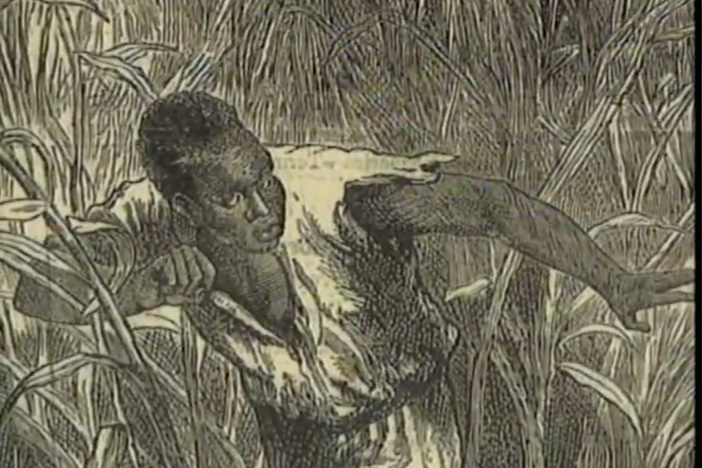
A Trip to Hog Hammock
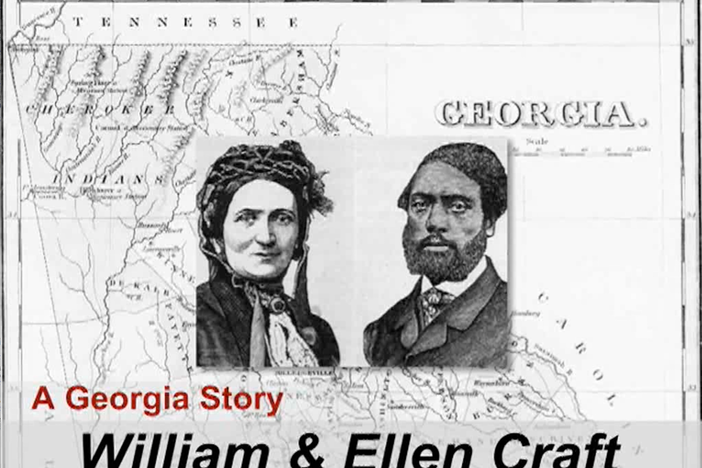
Escaping Slavery: The Story of William and Ellen Craft
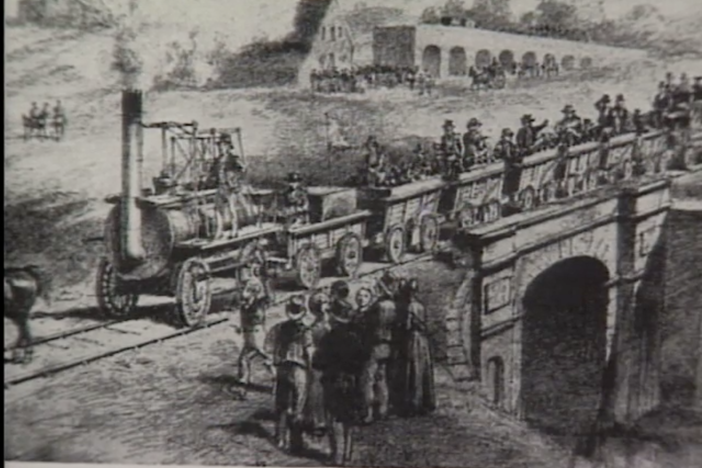
From River to Rail: Georgia's Transportation History
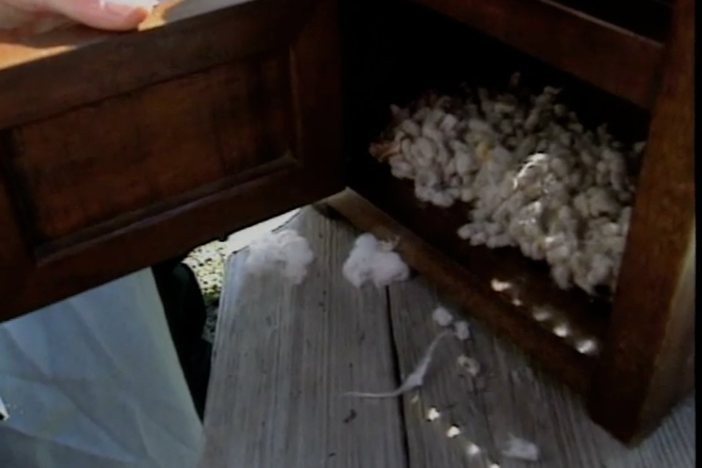
Making Cotton Pay
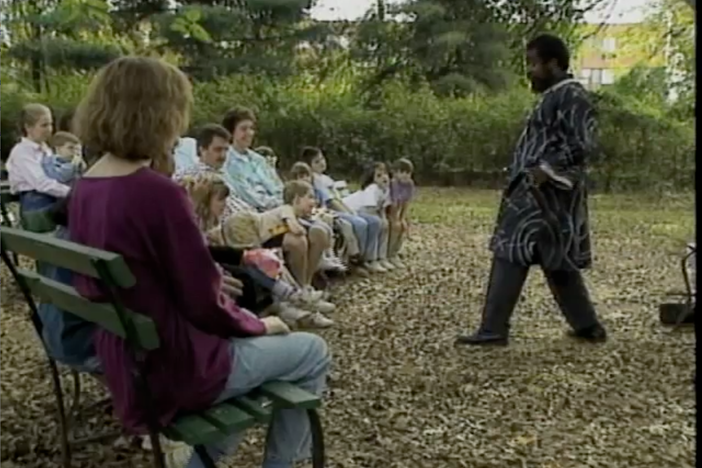
The Roots of Uncle Remus
Connect with gpb education.
For Black tour guides in Savannah, the historical is personal
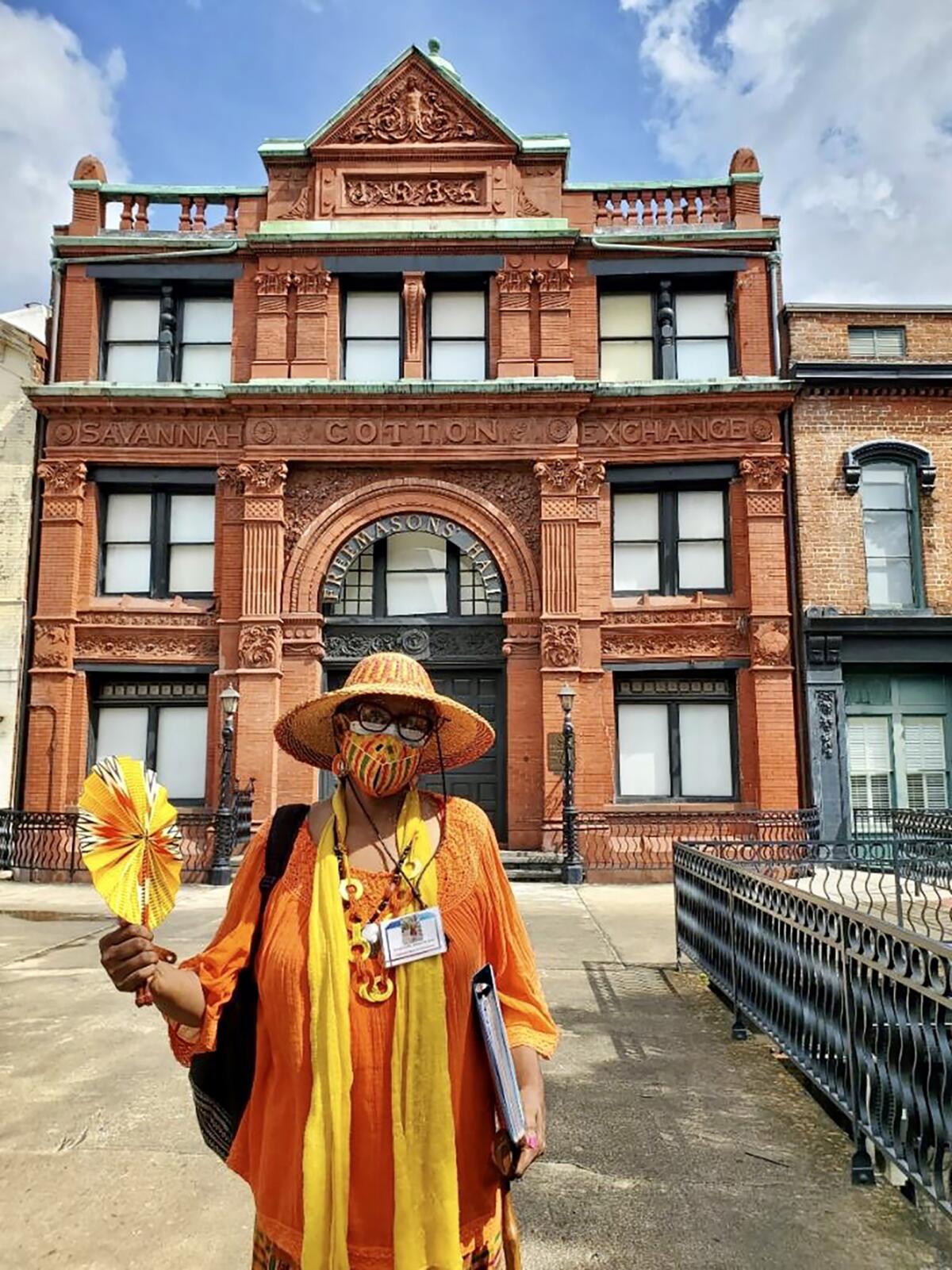
- Show more sharing options
- Copy Link URL Copied!
In the months before the coronavirus came to the United States, a flurry of viral negative reviews for guided tours of Southern homes and plantations sparked a debate on partisanship in the retelling of history. Expecting tours on architecture, some guests bemoaned what they called “lectures on the evils of slavery.” In Savannah, Ga. — where the tourism industry is king — Black historians, tour guides and museum employees say their main goal is finding a way to balance expectations with education.
Telfair Museums took a direct approach. In November 2018, Telfair completed its award-winning “Slavery and Freedom in Savannah” project, transforming the Owens-Thomas House & Slave Quarters’ working cellar, carriage house and enslaved-person quarters with new exhibits and narratives.
Previously, tours at the Owens-Thomas House focused mostly on George Welshman Owens, former mayor of Savannah; his family; and their lifestyle. Now, guests hear details of the vast disparities between those who lived in the main house and the enslaved women, men and children who worked there.
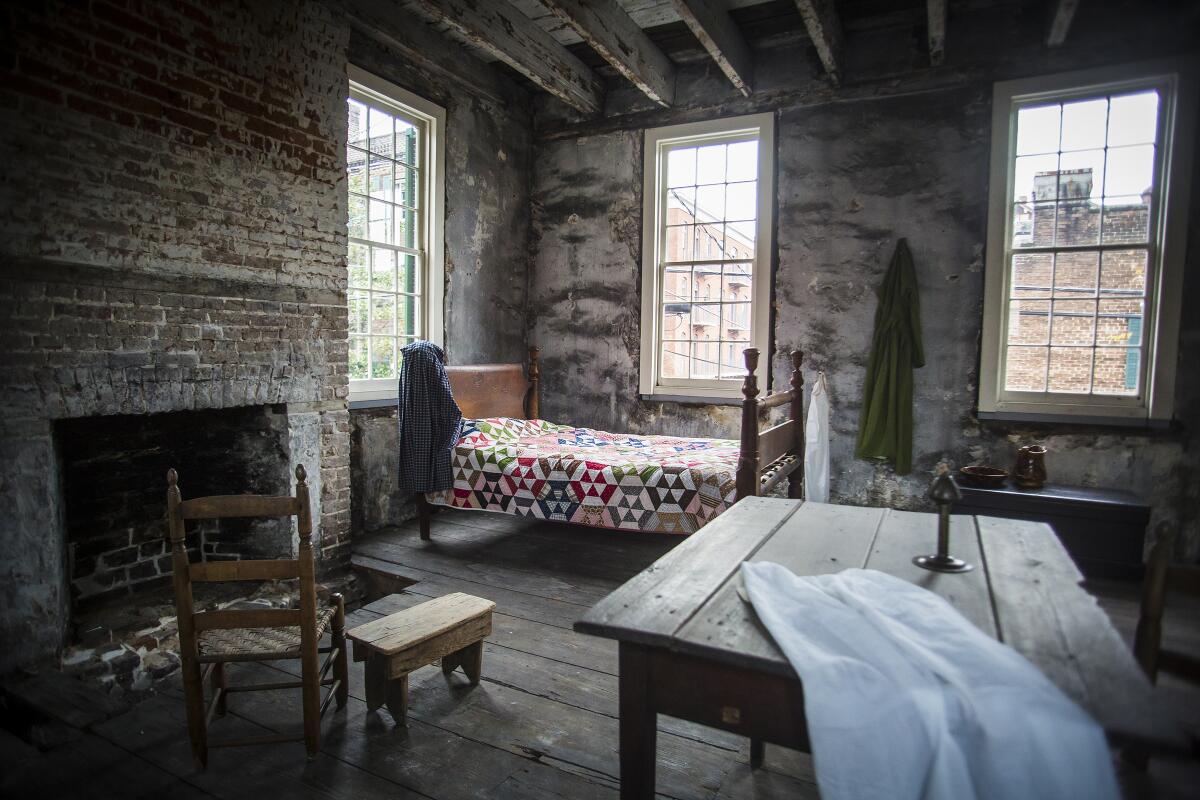
Lacey Wilson, a former historical interpreter at the Owens-Thomas House, joined the site that same year, during what she calls “the rough period.”
“In the weeks directly following the project’s debut, the response wasn’t always positive,” she said. “Maybe (guests) didn’t know what to expect. Maybe they’re in vacation mode and just didn’t want to hear the facts. I’ve been accused of pushing my own agenda or trying to make White people feel bad.”
The Owens-Thomas House & Slave Quarters has over a thousand reviews on Google, and double that number on TripAdvisor. While the majority of the reviews are positive, a quick scroll through one- and two-star reviews reveals a pattern. Guides are accused of being “too political,” “equating slavery with Black Lives Matter movements” or giving a “guilt trip on ‘Whites.’ ”
Wilson, however, is confident in her presentations.
“I got into this work because I believe it’s fascinating,” she said, “and I want to be a part of amplifying voices and narratives that are often hidden — even if that’s hard for some to stomach.”
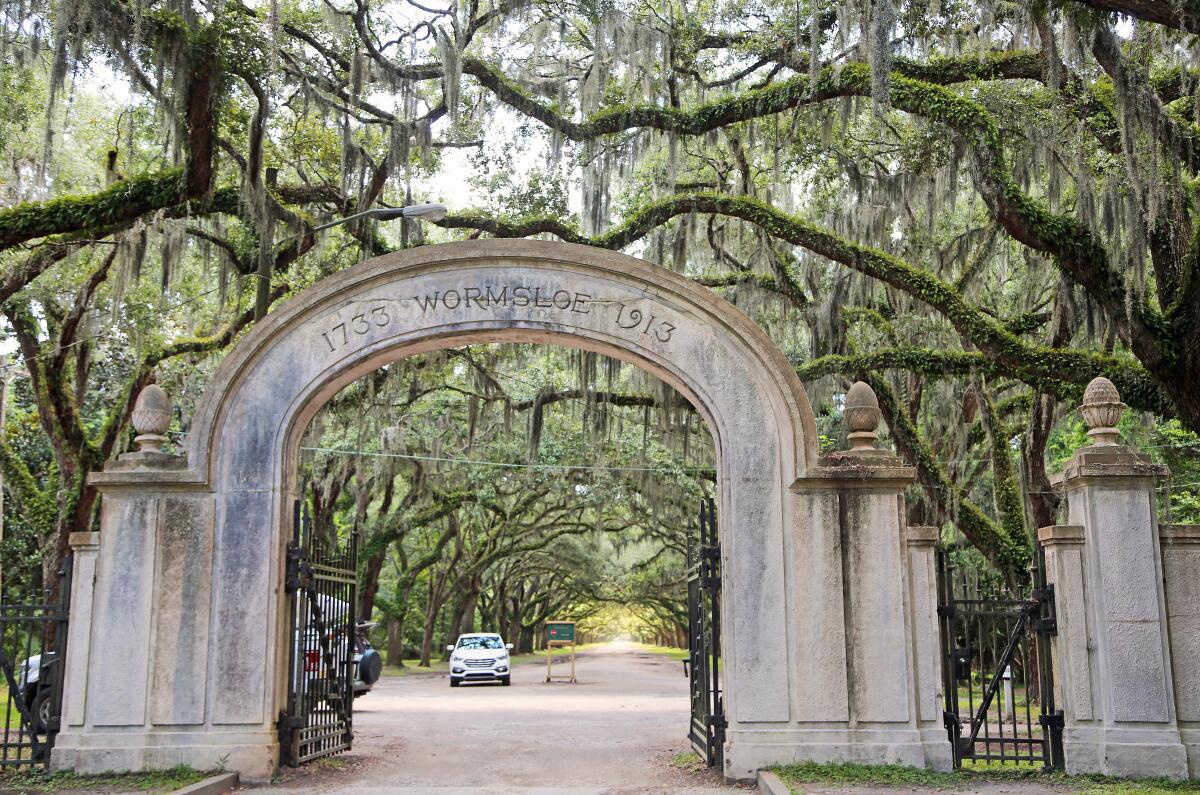
Shannon Browning-Mullis, Telfair’s curator of history and decorative arts and the brains behind the “Slavery and Freedom in Savannah project,” said that “the problem is people often identify with someone who lived in the house. Maybe it’s the lady of the house, Sarah Owens. But now you’re being told that Sarah Owens was an enslaver, and it’s uncomfortable.”
Though Wilson recently left the Owens-Thomas House for the role of site manager at Charlotte Hawkins Brown Museum State Historic Site in North Carolina, the move was due to personal and pandemic reasons. Wilson said the Owens-Thomas House always had her back when it came to negative comments from guests.
“Every tour guide runs their tour by us first,” Browning-Mullis added. “And we know Lacey was one of our best guides.”
As a whole, Telfair responds quickly to bad reviews regarding any of its three locations. That responsibility sits with Telfair marketing and communications manager Bri Salley.
“I try to always remain positive in our feedback with the visitors,” Salley said. “I offer links to connect them with more information from our site, and I remind myself that it’s not personal. It’s a breakdown of expectations.”
Since COVID-19 came to Savannah, Owens-Thomas House & Slave Quarters has switched temporarily to offering only audio tours, keeping the content the same. Some reviewers still question the tour’s focus on enslaved people.
“We understand that with historic homes, you usually expect to walk in to hear about pretty homes with decorative arts,” Salley said. “But now is the time to have these conversations.”
Not all tourists are seeking to learn about the Black experience, but for Black tour guides, especially those who founded their own companies, these are the stories of their ancestors.

“This is my history, my story,” local historian Amir Jamal Touré said. “When you hear someone get your history, your culture, wrong, it’ll make you realize you cannot let somebody else tell your stories.”
Touré is the founder of Day Clean Journeys, a touring company that recounts the history of the earliest West Africans brought to coastal Georgia and South Carolina. “Day-clean” is a West African phrase referring to first dawn when the sun begins to shine, a reminder that each day is new.
“My tours are meant to be thought-provoking, making you think outside of the box and see the things that others don’t see,” Touré said. For example, on his tours, he often highlights historic Savannah buildings built by Black hands. “They’ve become invisible to us, but in reality, when you look at anything from River Street through downtown, you’re looking at what Black hands have done in this city.”
Touré is a fast talker with a seemingly endless array of knowledge he uses to combat misinformation, biased thinking and local folk tales.
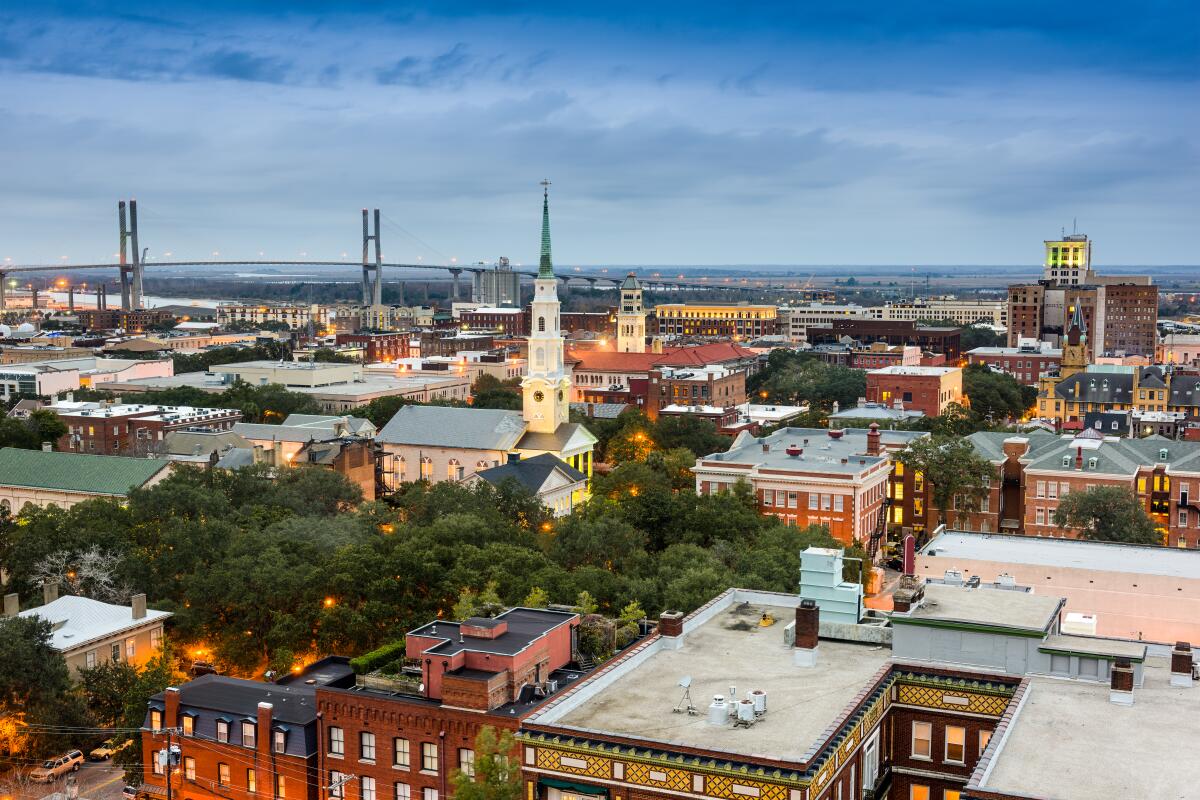
“Some (guests) might want the stereotype of a happy-go-lucky Negro, or they want mythology,” Touré said. “But that’s simply not what I do. I don’t have to say that Wright Square was the hanging square, and that’s why no Spanish moss grows (there). Our story, the real facts, are already so great.”
Working for himself means that Touré is also the one responding to reviews on TripAdvisor. Out of his 200 reviews, only five can be considered negative; most people appear to enjoy Touré’s eccentric living-history format. Since March, Touré said business has slowed, but Day Clean continues to offer masked walking tours or virtual tours for large groups.
Patt Gunn is the CEO and founder of Underground Tours of Savannah, a cultural heritage experience that showcases African American history through walking tours and reenactments. She is known fondly by locals as Sistah Patt, a Gullah Geechee master storyteller.
Last year, Forbes listed Underground Tours as one of the top 10 things to do in Savannah, and the company has only four- and five-star reviews on both TripAdvisor and Google. Gunn said she has never personally experienced a guest challenging her knowledge or the narratives, but that’s not for lack of discussing difficult truths.
“We tell people from the beginning that the story about slavery in Savannah has been redacted,” Gunn said. “And Underground Tour’s focus is to put the truth back into the picture. We do our homework very well, and we don’t spin anything.”
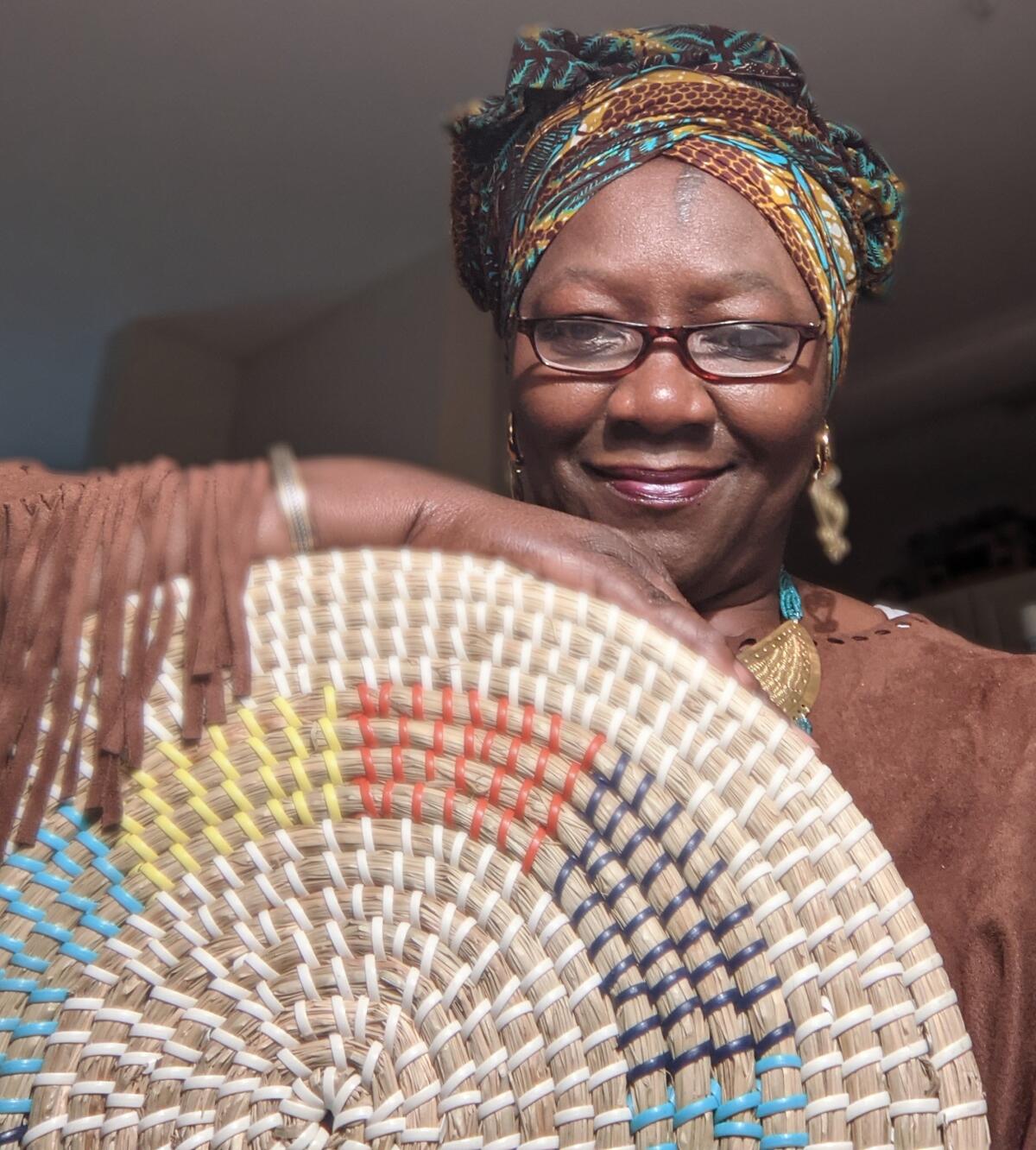
Instead, Gunn said, she’s found a way to tell the story of slavery in a more personal way. All of Gunn’s guides are Gullah Geechee, descendants of coastal Georgia and South Carolina enslaved people. They dress in period costumes and share history through storytelling, songs and re-enactments.
Now, with the entire country focused on race issues, Underground Tours has seen a boom in the request for tours, even in the time of COVID-19. There is currently a 10-guest limit on in-person tours, and Underground just launched a virtual tour option.
“We always connect our stories back to the present,” Gunn said. “Black lives matter then, and Black lives matter now. This seems to be the decade of atonement, and the nation was due for it.”
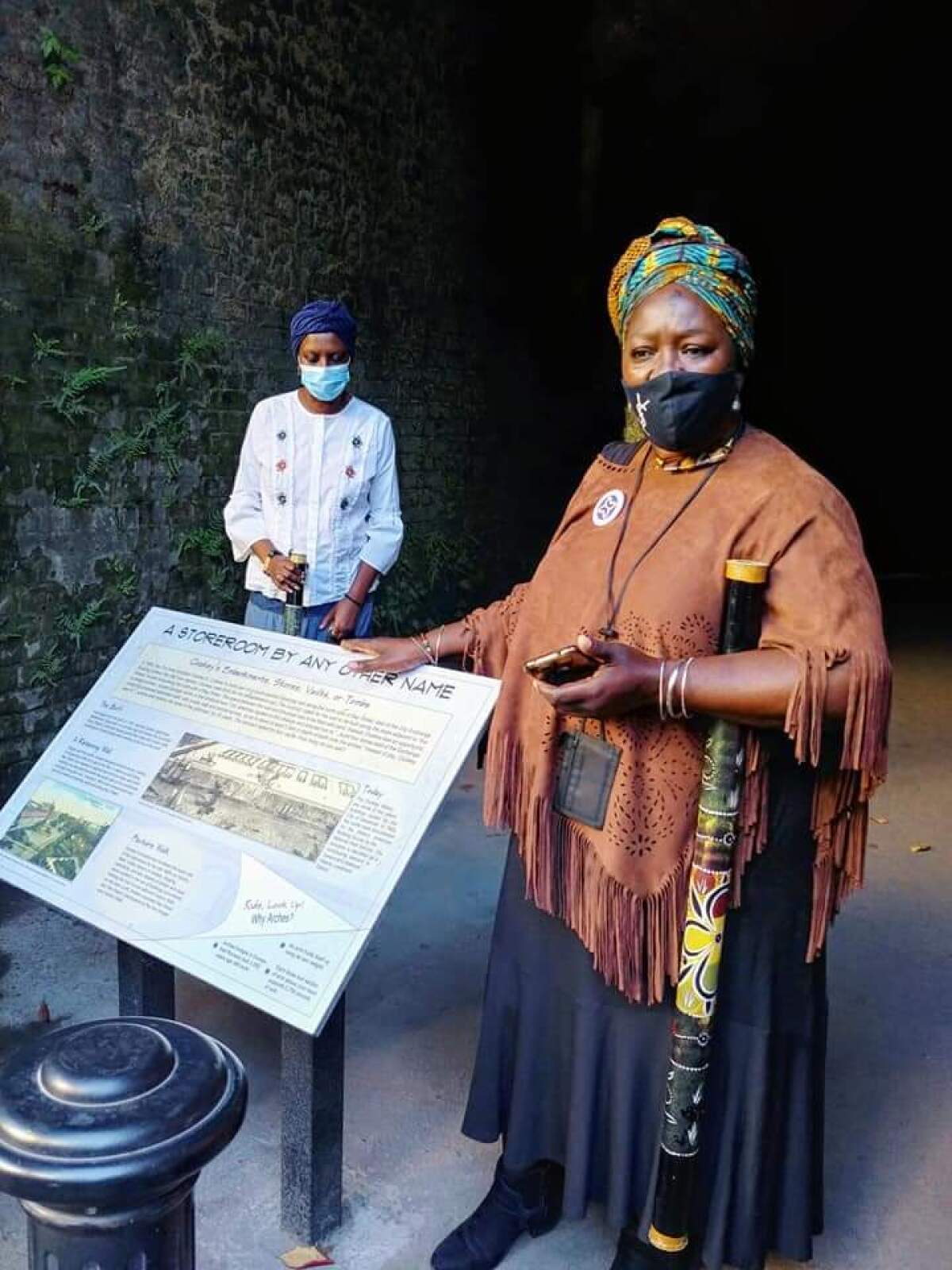
Tailored tours, like the ones led by Vaughnette Goode-Walker, founder of Footprints of Savannah Walking Tours, help avoid miscommunication about what guests expect to learn on their tour.
“Before I begin the tour, I ask guests, ‘Why this tour?’ ” Goode-Walker said. “They tell me what kind of tour they want, what topics or information they’re looking for, and we go from there. My basic theory is to make connections for people, give them that ‘aha’ moment while we’re walking and talking.”
Unlike some of the other Black history tours in Savannah, Footprints engages less in the brutality of slavery, and more in the economics and structures of slavery and oppression.
“My tour is called Footprints because I look at the architecture that’s here today, but also I carry a flip book full of pictures that show you what buildings would have been where in the past,” Goode-Walker said. “Those are the footprints that I’m dealing with, as well as the footpaths that African people walked here in the city from slavery to freedom.”
Most recently, Condé Nast Traveler featured a write-up that called the tour an “unhurried stroll ... led by an expert historian.” Today, Goode-Walker offers virtual tours and requires masks for all in-person groups.
“The people who are coming on my tours, if they are there to learn, I’m there to help them,” she said. “I’m not there to be antagonistic about enslavement. My tours are about education. Every now and then, there’s a skeptic, but by the end of the tour, I make sure that we’re all on the same page.”
Another Savannah native, Karen Wortham, started her touring business, Indigo Journey, in 2009, named for the dye that enslaved Africans used on clothing, staining their hands and feet purple.
Using firsthand narratives of enslaved people and other resources from Savannah’s Carnegie Library and the Georgia Historical Society, Wortham shares a plethora of intimate stories that make the general history of slavery in Savannah hit home. On each tour, she hands out pamphlets and bookmarks that list her references, encouraging guests to do their own research and tell her what they find. This, she said, is the reason she doesn’t have guests debating facts with her, even though she is not formally educated.
“You don’t have to believe me, but you could believe what is written,” she said. “You could go look at the census reports or the enslaved-person narratives, just like I did, and you’ll get the feel of how damaging slavery was.”
Today, Indigo Journey is scheduling walking tours that require guests to wear masks and abide by social distancing protocols. In the decade since founding Indigo Journey, she has racked up mostly positive online reviews, and she said no one has ever contacted her after a tour to correct her.
“I also market very honestly,” Wortham said. “It’s not a surprise what you’re going to get on my tour. I say, look, if you want to go on a vacation where you feel good, go to Disney World. ... If you want truth, come to Savannah.”
Felton is a freelance writer in Savannah.
Get U-T Arts & Culture on Thursdays
A San Diego insider’s look at what talented artists are bringing to the stage, screen, galleries and more.
You may occasionally receive promotional content from the San Diego Union-Tribune.
More in this section
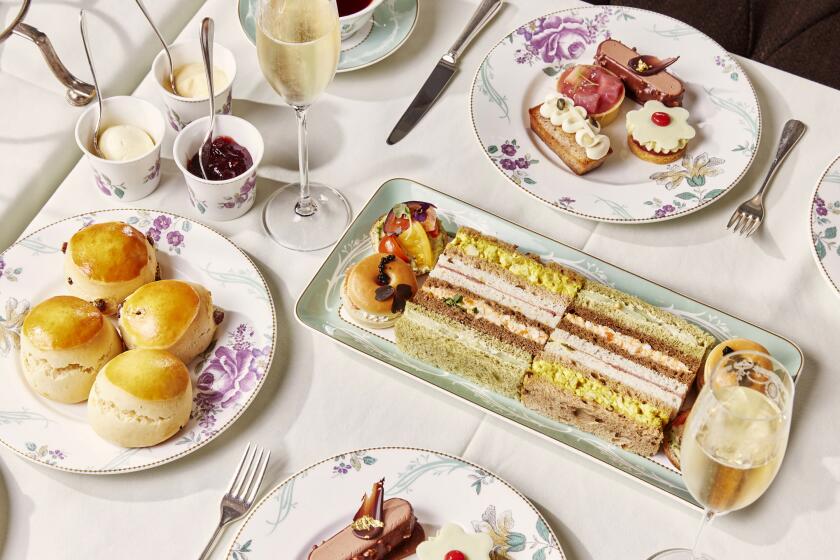
Time for tea in London? Top hotels show how it’s made to perfection
Afternoon tea in London — whether at a posh hotel such as the Ritz or the Savoy or in a department store like Harrods or Fortnum & Mason — is a special occasion treat for visitors and locals alike.
April 28, 2024
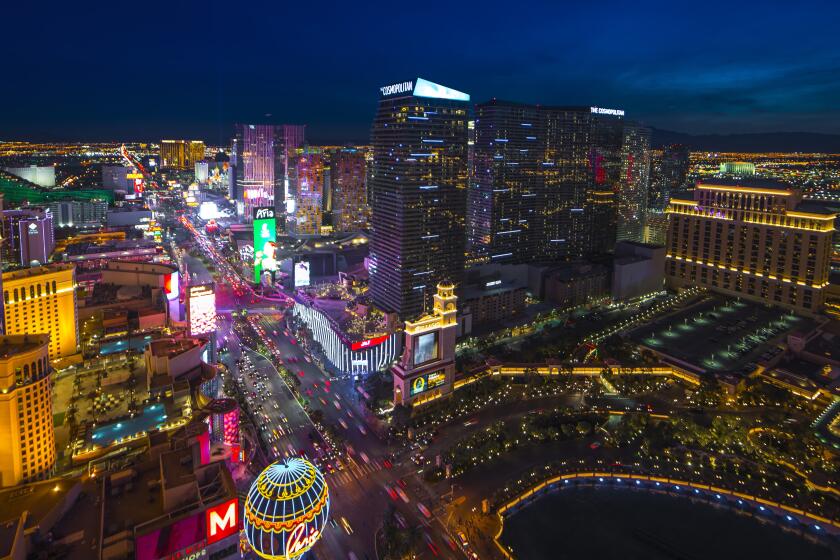
San Diego will soon be getting a lot more nonstop flights to Vegas
While many airlines fly regularly to Las Vegas from San Diego International Airport, this will be a first for this carrier.
April 25, 2024

Lush foliage, dazzling beaches, deep traditions put Fiji’s hundreds of islands on the map
A look at three destinations within the Fijian islands that beg for a repeat visit.
April 23, 2024

Gardens of stone, moss, sand: 4 moments of Zen in Kyoto
The Japanese city’s dry gardens seem timeless, but these relatively new versions show that they are still evolving, offering serenity in an increasingly overtouristed city
April 21, 2024
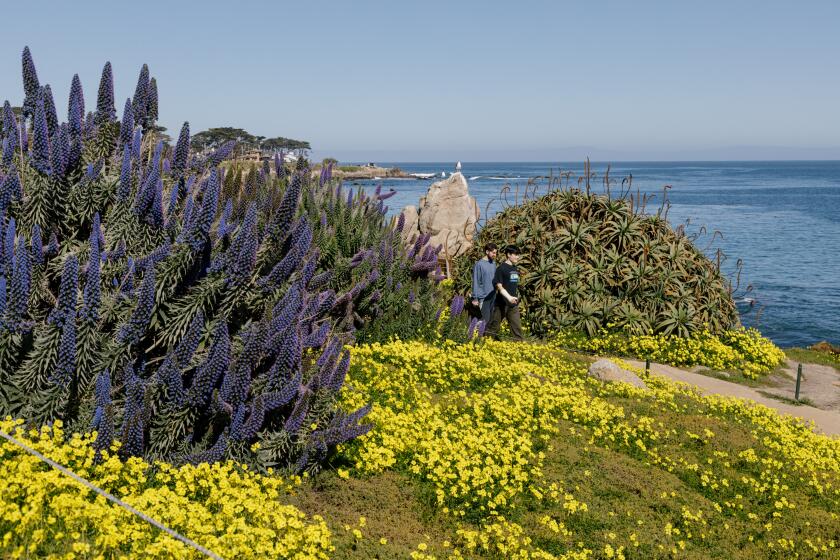
Exploring Monterey on a dime
A frugal traveler puts the California county, known for its exclusive towns and fancy golf courses, to the test, combining stunning nature with low-key hotels, small businesses and a few splurges
April 18, 2024

Esquire names the top new hotel in North America and Europe: It’s in San Diego
The historic Lafayette Hotel, which debuted its $34 million redo last year, is ‘pretty damn cool,’ the magazine editors said of the 2024 new hotel of the year
April 9, 2024
- Things to Do
- Restaurants
- Vacation Rentals
- Travel Stories
- Rental Cars
- Add a Place
- Travel Forum
- Travelers' Choice
- Help Center
APPARITION CAUGHT, HANDS DOWN BEST TOUR - Ghosts & Gravestones Tour Savannah
- United States
- Georgia (GA)
- Georgia Coast
- Savannah
- Savannah - Things to Do
- Ghosts & Gravestones Tour Savannah
APPARITION CAUGHT, HANDS DOWN BEST TOUR
I took a solo late night investigation w/Katie. I was the only guest so it was awesome! I was unable to add a video of what appears to be an apparition forming that I didn't see until later while reviewing my footage (only pics uploaded) They have so much cool equipment and we picked up lots of stuff. Always be sure to protect yourself and ask only for those with the highest good to communicate with you. We had a good experience because of this. During the tour I was told about others having previous bad experiences but ours was wonderful. Many things came through the Spirit box and also the camera picked up several stick figures. I generally go on tours on the lower end pricing. However, I wanted the full on experience and this was hands down worth the money. You are actually in a haunted building and using equipment. There's no leaving and walking elsewhere. You're in it! Next time I'm in town, I will be doing this tour again.

Thank you for this glowing review! We're glad you had such an amazing investigation with Katie! It really is a unique experience to be able to properly investigate a haunted in building. You caught some truly unexplainable things on camera! We can't wait to see you next time you're in town!
Our guide Verna Greene was energetic and fun ! Our driver Sharonda was a good sport, friendly and a careful driver. I liked the 2 stops, the Andrew Low house and the Chandlery. I’ve done several Savannah ghost tours over the years and this one was the best so far .
Tammy M, Thank you so much for your wonderful review! I have passed your thoughts on to Verna and Shavonda and they were thrilled to know you had such a great experience with them. Thank you so much again and I hope you enjoy the rest of your time in Savannah. May you join us again on board the Trolley of the Doomed!
Not a chilling or thrilling tour, by any means; more of a historical retelling of death-related events (which we found interesting). Allie was a very capable and knowledgeable guide (although a very fast talker); a great sense of humor and able to keep things moving (kudos to our driver, Deion, too…some tight areas to drive through). The Low house was interesting and, without revealing too much, the final stop was fun, but we could understand very little of what the actor was saying. Worthwhile, we thought.
Wow, that is a great review! Thank you so much for taking the time to write about your experience. We love reading about our guests' experiences and sharing them with our CAST. We hope you'll come back and visit us again.
This was the first ghost tour I have been on and I would recommend it to anyone that likes a good ghost story and enjoys seeing historical sites. The narrator was very informative and entertaining. The actors and actresses that played parts at the historical stops was very much into character and made the tour that much more fun. I would go on this tour again.

Wow, thank you for that wonderful review! We're glad to know we made it worthwhile. Our guides work hard to make their presentations interesting, and we love sharing these comments with them. We hope to see you again!
We had a fantastic time with Andrew and Jared during our paranormal investigation. Both were knowledgeable, professional, and skilled at investigations. They explained how to use the equipment and helped to explain if something was a paranormal/unexplainable event or if there was a logical reason for what happened. Our daughters had a great time interacting with the spirit box. The best part for me was interacting with spirits with the SLS camera. I highly recommend participating in an investigation with the Ghosts & Graveyards Tour group. We will be talking about this for years!

Thank you for taking the time to post pictures and write a review! We hope to see you again!
If you go in knowing this is more of a lighthearted show than a ghost hunt, you will be pleased. We had done a true ghost hunt in Charleston and left feeling like we may have truly seen a ghost. This was more of ghost stories told by a delightful tour guide. If you are looking for a paranormal experience, this is not the tour for you!
Thank you for your review! We're glad you had a good time with your ghost host! If you're interested in a paranormal investigation, I encourage you to visit our website and check out our other tour, Ghost Hunters of Savannah! We hope to see you again!
- Things to Do
- Community Calendar
Brantley Gilbert: Off the Rails Tour

We want to hear from you if you have an event to share or updates to this event .
Images provided by AmericanTowns.com , Ticketmaster
Other Events You May Like

Tai Chi Five Animal Play: Tiger & Deer
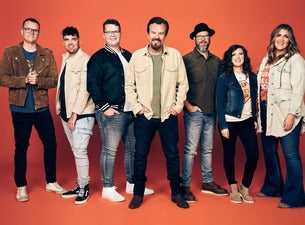
Casting Crowns: The 20th Anniversary Tour

Pete Davidson: Prehab Tour
Upcoming AARP Events
An indorican fitness balance bootcamp.
Monday, Apr 29, 2024 at 1:00 p.m. ET
Online Event
Fitness Class: Strengthen Your Bones
Monday, Apr 29, 2024 at 6:00 p.m. ET
Social Security: Spouse and Survivor Benefits
Monday, Apr 29, 2024 at 6:30 p.m. ET
View All AARP Events
- Immediate access to your member benefits
- Discounts on travel and everyday savings
- Subscription to AARP The Magazine
- FREE second membership
Contact AARP Georgia
- [email protected]
- AARP Georgia
What community do you want to visit?
¿qué comunidad quieres visitar.

IMAGES
COMMENTS
SAVANNAH HISTORY TOUR. Savannah celebrates more than 250 years of black history and features a number of historic sites and museums that focus on this important piece of the area's past. ... SLAVE QUARTERS WALK-THROUGH ... Established in 1996 and recognized in 2009 as "Georgia's Official Civil Rights Museum," the Ralph Mark Gilbert ...
Owens-Thomas House & Slave Quarters Tours. Guided tours are given at 15-minute intervals. The last tour begins at 4:00pm. ... Savannah, GA 31401 Learn More about Jepson Center & Telfair Children's Art Museum. Telfair Academy Telfair Academy. 121 Barnard St. Savannah, GA 31401 ...
Embark on a remarkable journey of Savannah's past with the Savannah Slavery to Freedom Tour featuring Savannah's own Master Gullah Geechee Truth-Teller 'Sistah Patt.'. This is a tour about the African American journey from slavery to freedom during the Antebellum days on the coast of Savannah. The tour begins aboard a Gray Line vehicle ...
Find Underground Tours of Savannah: Slaves in the City, Savannah, Georgia, United States, ratings, photos, prices, expert advice, traveler reviews and tips, and more information from Condé Nast ...
Location: 124 Abercorn Street, Savannah, GA 31401. Tickets: The $20 ticket is a 3-for-1 fee that also grants entry to nearby Telfair Academy and Jepson Center for the Arts. Pay close attention to the instructions that come with your tickets, as you'll need to stop by in-person to reserve a time slot for your tour.
Embark on a remarkable journey of Savannah's past with the Savannah Slavery to Freedom Tour featuring Savannah's own Master Gullah Geechee Truth-Teller 'Sistah Patt' This is a mesmerizing tour of the African American journey from slavery to freedom during the Antebellum days (1748-1864) on the coast of Savannah.
40 Acres and a Mule Tour is the private, two-hour Savannah walking tour that covers the town's history of slavery and emancipation from its founding in 1733 to the end of the Civil War in 1865. ... The first square of Savannah served in the 1850s as the address for the city's pre-eminent slave trader, who promoted one of the largest sales of ...
Embark on a remarkable journey of Savannah's past with the Savannah Slavery to Freedom Tour featuring Savannah's own Master Gullah Geechee Truth-Teller 'Sistah Patt' This is a mesmerizing tour of the African American journey from slavery to freedom during the Antebellum days (1748-1864) on the coast of Savannah. Read more. from. $64.00 ...
OUR TOUR Voted # 1 'SLAVES IN THE CITY' - Circa: 1748-1864 'Come Walk With Underground Tours of Savannah!' VOTED 'Top 10 Things to Do in Savannah' - USA TODAY TRAVEL ~Authentic Local Gullah Geechee Tour Guides Share the African American Journey from Slavery to Freedom - in partnership with Kelly Tours!
Tour exploring the role of African-Americans in the history of Savannah and Georgia. Available daily, morning or afternoon. Adults $25, seniors (62+)/students $20, children (6-17) $18, young children (0-5) $10. Call 912-220-5966 or email [email protected] for reservations. More details.
UNDERGROUND TOURS OF SAVANNAH was born out of the redaction of an essential part of American history - slavery & freedom. ... two years before the commemoration of 400 after the atrocities of the Trans Atlantic Slave Trade. ... museums and walking tours and found only a few tours that was 'truth-telling' about Savannah, Georgia serving as ...
Learn about Urban slavery, the Slave Trade and the Cotton Trade in Savannah. See the remnants of the 1860s slave trade and a building that once was a slave Mart that became a Freedmen's School. ... Footprints of Savannah Virtual Tours. For more information and to book reservations call (912) 695-3872. Virtual Tour Fee: $15 per person. Pay ...
This is a mesmerizing tour of the African American journey from slavery to freedom during the Antebellum days (1748-1864) on the coast of Savannah. The tour begins aboard a Gray Line vehicle before embarking on a walking tour that will last between 1.5-2 hours along River Street, Factor's Walk, Bay Street, and Johnson Square. Learn about the ...
Delve into the heart of Savannah, Georgia, where the echoes of the past resonate through cobblestone streets and architecture steeped in history.Immerse yourself in an educational experience that transcends time with Slave History Plantation Tours, bringing into focus the poignant narratives of African American heritage.Through the award-winning "Slavery and Freedom in Savannah" project at ...
The Life of the Enslaved in the Davenport House. Setting out on a new life in the Georgia port city of Savannah, New England born carpenter Isaiah Davenport arrived in 1809. The twenty-five year old began his business, soon married, and started a family. Shortly after he wed Sarah Clark, tax records show he acquired two enslaved workers.
They didn't send the slaves back, Gunn said, and slavery took place in Savannah for 116 years. Tuesday, Aug. 20, marked the 400th anniversary of slavery in the U.S. To acknowledge the ...
February 18, 2024. Embark on a journey through the deep roots and complex tapestry of the South with Savannah Cotton Plantation Tours. Strolling through the storied grounds and historic homes, you'll uncover the poignant tales woven into the fabric of Georgia's legacy. Meet the Southern plantation tours that pull back the veil on cotton's ...
June 26, 2019. A few years ago, people touring the Owens-Thomas House and Slave Quarters in Savannah, Ga., would have heard a lot about George Owens, the lawyer, farmer and Congressional ...
Savannah tour guide Ogbanna explains the Underground Railroad and the First African Baptist Church in Savannah, established in 1773. ... nullification, Compromise of 1850 and the Georgia Platform, the Dred Scott case, Abraham Lincoln's election in 1860, and the debate over secession in Georgia. ... Fugitive Slave Law: ...
Since COVID-19 came to Savannah, Owens-Thomas House & Slave Quarters has switched temporarily to offering only audio tours, keeping the content the same. Some reviewers still question the tour's ...
Ghosts & Gravestones Tour Savannah: APPARITION CAUGHT, HANDS DOWN BEST TOUR - See 1,975 traveler reviews, 452 candid photos, and great deals for Savannah, GA, at Tripadvisor. ... 301 E River St, Savannah, GA 31401-1221. Open today: 7:00 PM - 9:30 PM. Save. Savannah Ghosts & Gravestones Trolley Tour. 1,857. Book in advance.
Mindful Movement Mondays: Your Foundation. Monday, Apr 29, 2024 at 10:00 a.m. ET. Zoom. Online Event. Enhance Your Workout With Yoga Fusion. Monday, Apr 29, 2024 at ...